🚨 WIN a VW Golf R 🚨 @NIAirAmbulance http://www.cmcompetitionsni.co.uk/
Source: Jonathan Rea On Facebook
🚨 WIN a VW Golf R 🚨 @NIAirAmbulance http://www.cmcompetitionsni.co.uk/
Source: Jonathan Rea On Facebook
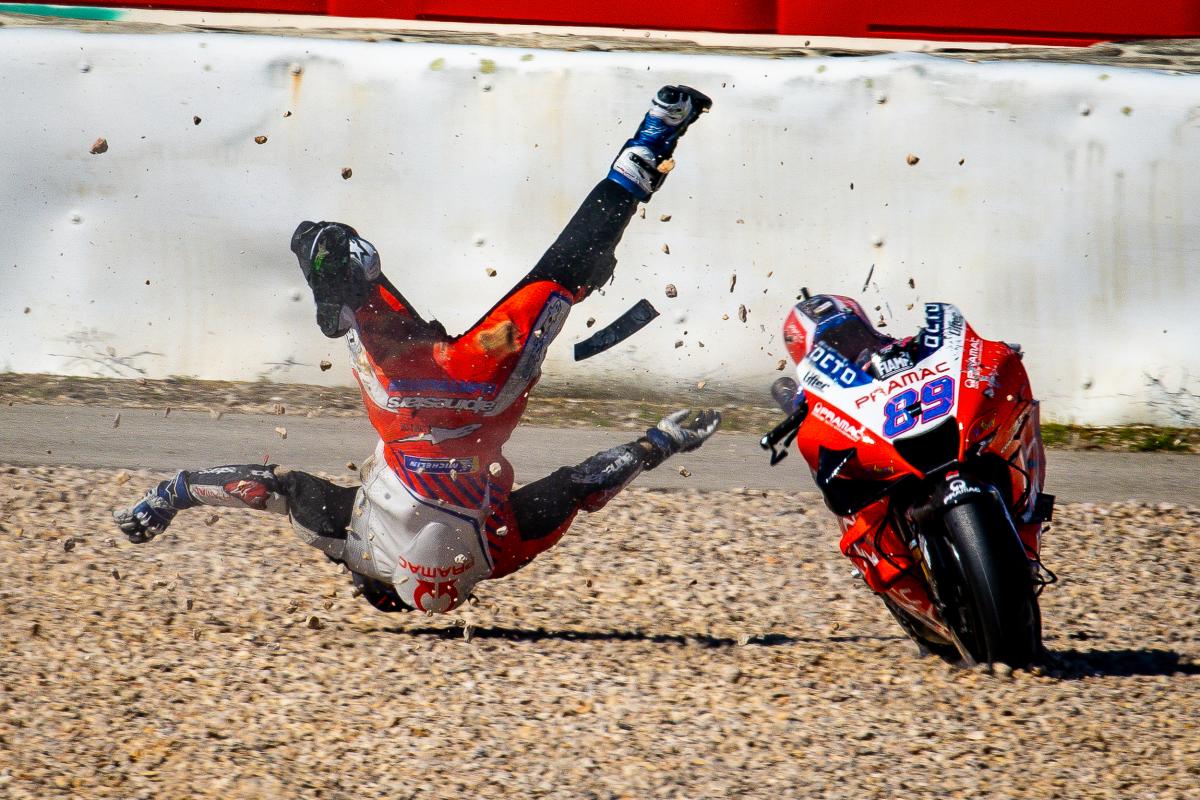
What makes Martin’s crash one of the nastiest we’ve seen in some time is the repeated impacts of over 20G he suffered. In total, Martin suffered seven different spikes of impact recorded at over 20G with the heaviest impact being recorded at over 26G. Again, by comparison, the largest force recorded by Alpinestars was 29.9G in Loris Baz’s crash at Sepang Test in 2016. The largest in recent years was Marquez’s highside during Q2 at the Malaysian Grand Prix in 2019, with 26.27G recorded on that day.
Source: MotoGP.com – Read Full Article Here
Postponed opener becomes rounds seven and eight of 2021 series.
The postponed Nowra rounds of the 2021 Yamaha Australian Off-Road Championship (AORC) have been rescheduled for 28-29 August, becoming rounds seven and eight of the season.
Nowra was initially due to hist this year’s opening rounds between 27-28 March until being cancelled because of flooding in the region, however, a revised date has now been made official.
“The rounds scheduled for Nowra earlier this year were postponed due to severe weather, which impacted the area causing extensive flooding of the track and pit area making it impossible for riders and teams to travel and participate in the event,” according to a statement from Motorcycling Australia (MA).
“The Oyster Bay Motorcycle Club had done significant work in preparing for the original rounds and we know they will leave no stone unturned to ensure a sensational track is provided come August 28 and 29 for what will now be AORC rounds seven and eight.
“The championship has also received significant support from Shoalhaven City Council, which ensures the event can provide a spectacular race weekend for both riders and fans of AORC.”
Instead, the AORC series commenced last weekend at Golden Beach in Victoria, where Daniel Milner (E3), Todd Waters (E2) and Mason Semmens (E1) won the three pro-level categories across both rounds one and two of season 2021.
2021 Australian Off-Road Championship (AORC) calendar (revised):
Rds 1-2 – 17-18 APR – Golden Beach, VIC
Rds 3-4 – 17-18 JUL – Kyogle, NSW
Rds 5-6 – 6-7 AUG – QMP, QLD
Rds 7-8 – 28-29 AUG – Nowra, NSW
Rds 9-10 – 18-19 SEP – Kingston SE, SA
Rds 11-12 – 16-17 OCT – Omeo, VIC
Source: MotoOnline.com.au
MX2 contender keeps positive mindset despite surgery on injury.
Serco Yamaha racer Jesse Dobson is determined to line up at the second round of the Penrite ProMX Championship at Canberra next weekend despite breaking his collarbone last Sunday and undergoing surgery.
While chasing down MX2 leader Jay Wilson (Yamalube Yamaha Racing) in a Sunshine State MX Series at Coolum, Dobson got out of shape and hit a mound of dirt on the side of the track and went down heavily.
“The mound of dirt was in a funny spot and I got squirrely and hit it fourth pinned,” Dobson told MotoOnline. “It was a big crash – I went over the bars and it rattled me pretty hard.”
Hospital scans cleared Dobson of initial injury concerns to his leg and pelvis, but determined he’d broken his collarbone and taken a knock to the head. His collarbone was plated on Wednesday and he returned home yesterday afternoon.
“Plating it speeds up the process, but we’ll still be relying on the hardware to hold together at Canberra next weekend,” he continued. “I’ll be there to try and get as many points as possible and stay in the MX2 championship hunt. I’m trying to keep a positive outlook on it all.”
The capable Queenslander finished fourth overall with 4-3 results at the opening ProMX round at Wonthaggi two weeks ago, ticking off his goal of finishing inside the top five.
“I was a bit bummed to not be on the podium, but we scored good points,” said Dobson. “In the second race I was pressuring second, but got caught up in lapped riders. A younger Jesse Dobson might’ve forced the issue, but I probably would’ve ended up on my head. I feel my mindset has matured and I’m looking at the big picture a lot more this year.”
Source: MotoOnline.com.au
Vespa celebrates 75 years and reaches the extraordinary milestone of 19 million units produced, beginning from the spring of 1946. The Vespa that celebrates the 19 million is a GTS 300 in 75th Anniversary Special Edition and was assembled in the Pontedera plant, where Vespa has been manufactured uninterrupted since 1946.
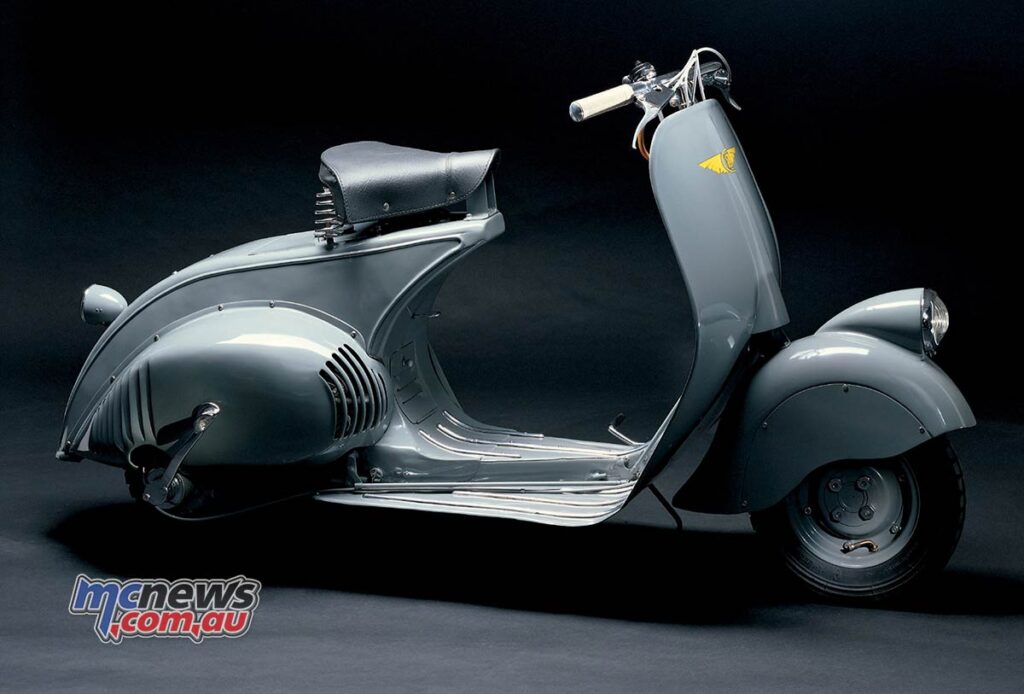
Halfway through the first decade of the new millennia, annual Vespa production was around 50 thousand units and, since then, constant and spectacular growth took it an excess of 100 thousand in 2007 and 200 thousand from 2018.
Vespsa is today manufactured out of three production sites: Pontedera, with production destined for Europe, the Americas and all the western markets; Vinh Phuc, in Vietnam, which serves the local market along with Australia, and India hosts the ultra-modern Baramati plant, opened in April 2012, where Vespas for the Indian and Nepalese markets are produced.
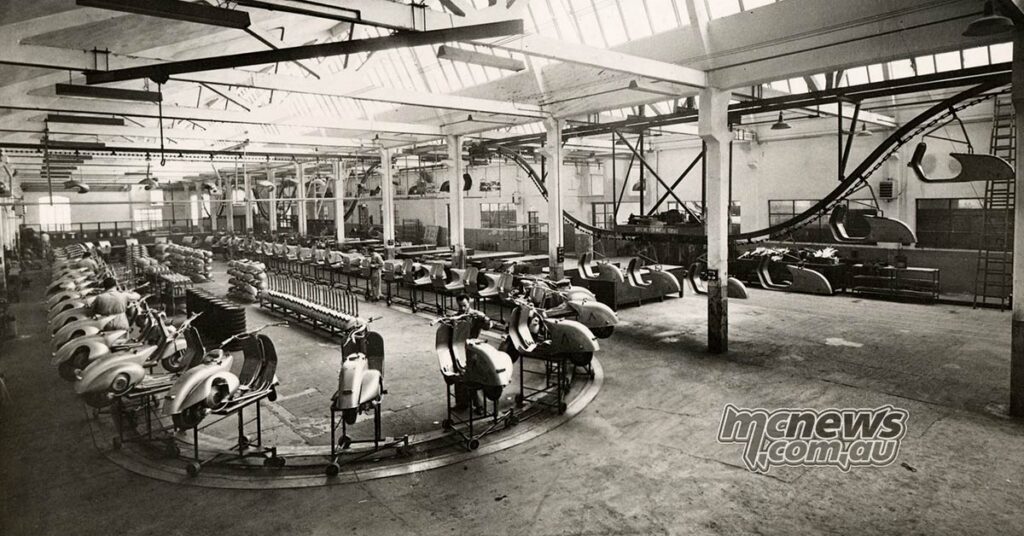
For its 75th birthday, Vespa introduces a special Vespa 75th series, available for Vespa Primavera (in the 50, 125 and 150 cc engine sizes) and for Vespa GTS (in the 125 and 300 cc engine sizes), limitedly to 2021.
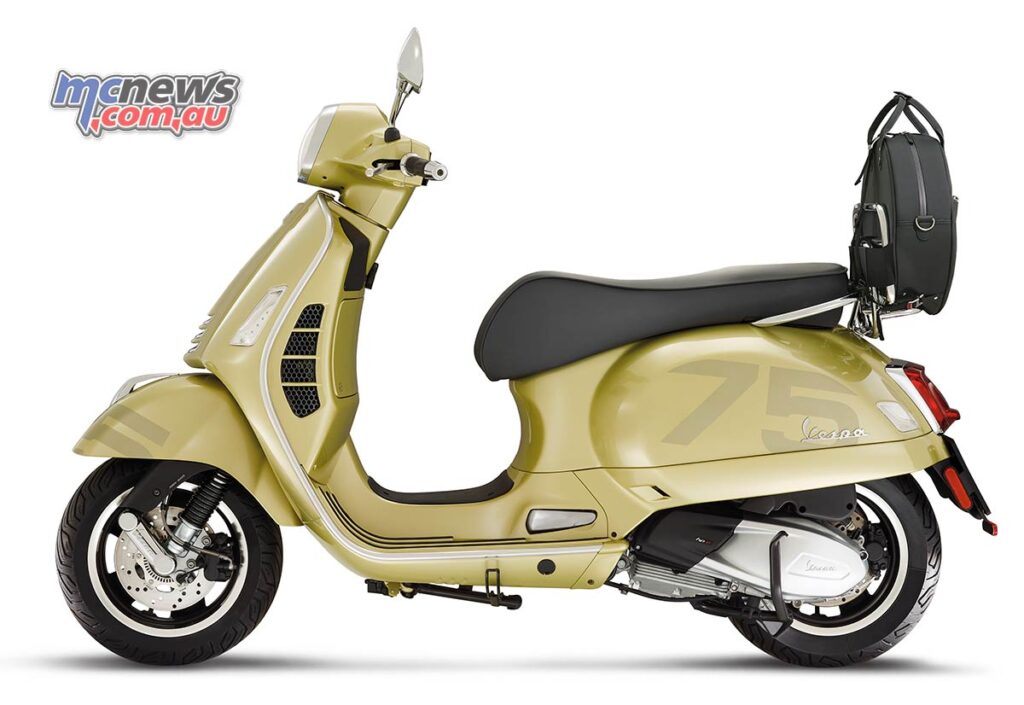
The body of Vespa 75th takes on the brand new metallic Giallo 75th colour which, designed expressly for this series, reinterprets colours in a modern key that were all the rage in the forties. The number 75 appears on the side panels and front mudguard in a more accentuated shade, creating an elegant tone-on-tone, as well on the front, where the traditional “necktie” is refined in a matte yellow pyrite colour.
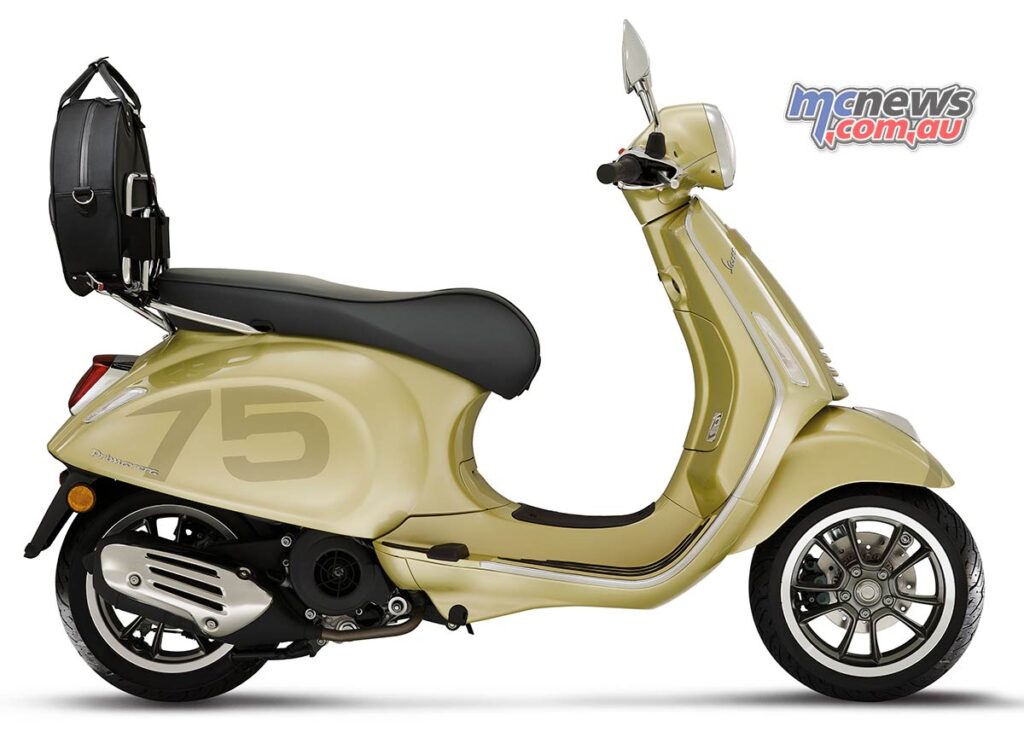
Vespa was born out of the desire to create an innovative product for individual mobility. First a “motor scooter” was built on the model of small motorcycles for parachutists and then a prototype that revolutionised the concept that had dominated the classic motorcycling layout until then. A vehicle was created with a stress-bearing body, direct-drive, with the gear shift on the handlebar. The classic front fork disappeared in favour of a single-sided swingarm that made tyre changes easier and, above all, the frame disappeared, replaced by a stress-bearing body capable of protecting the rider from dirt and rumpled clothing. The Vespa design patent filing date is 23 April 1946.
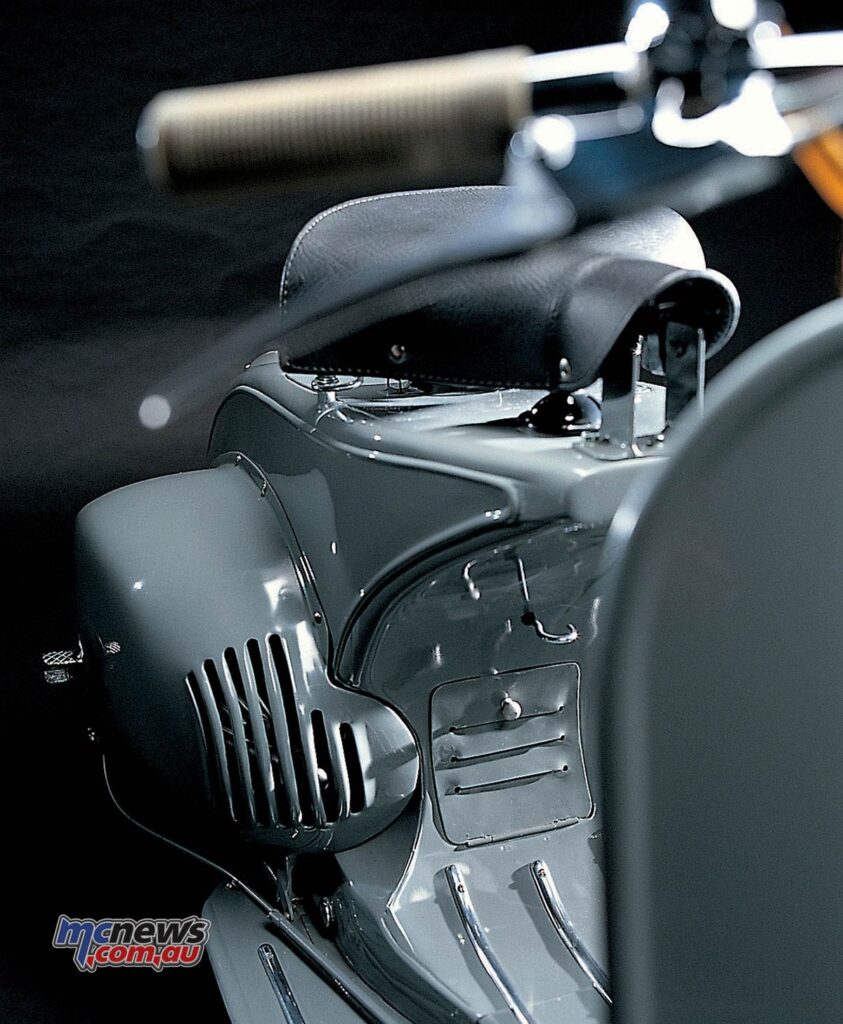
After the years of rebirth, Vespa continued to strengthen through the generational renewal of the sixties. As cars and mass motorisation spread, Vespa offered salvation from traffic, with the versions in the smaller engine sizes catering to the growing youth market. Then, in the ‘70s, the signs of a growing ecological awareness and the first petrol crisis arrived, Vespa was the antidote to city pollution, able to zip through traffic and easily find parking.
Still built entirely out of steel to this day, Vespa has also carved out a modern legend and successfully blends heritage with modern technology in a way that no others has managed and continue to produce the world’s most evocative scooters.
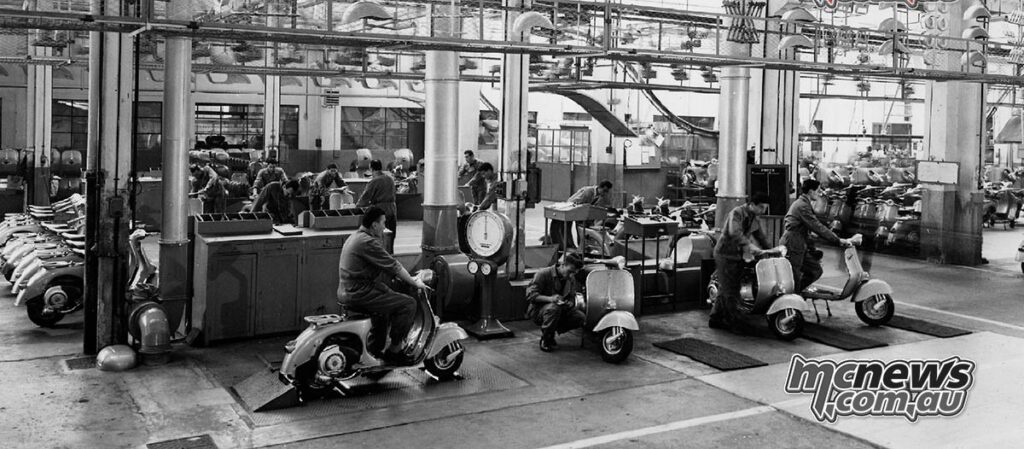
On 23 April 1946, Piaggio (founded in 1884) files the patent for “a motorcycle featuring a rational elemental and organic complex combined with frame and fenders and an engine hood covering all mechanical parts”. The Vespa is born. The motorised scooter with a 98 cc, 2T single-cylinder engine is built in the Pontedera plant, in Tuscany.
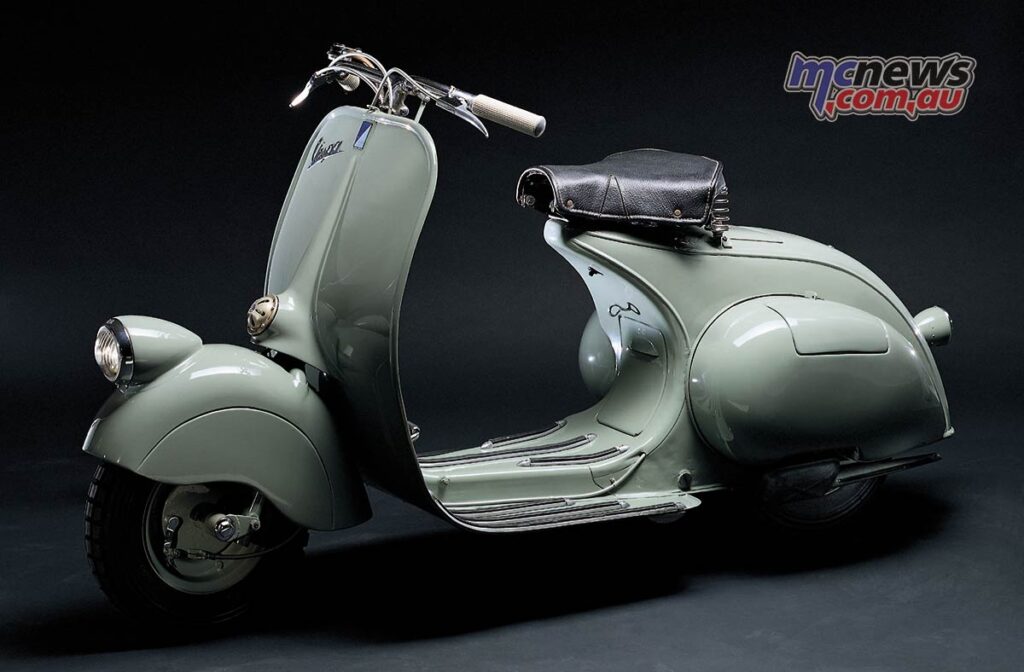
1948 – The Vespa 125 cc model is introduced.
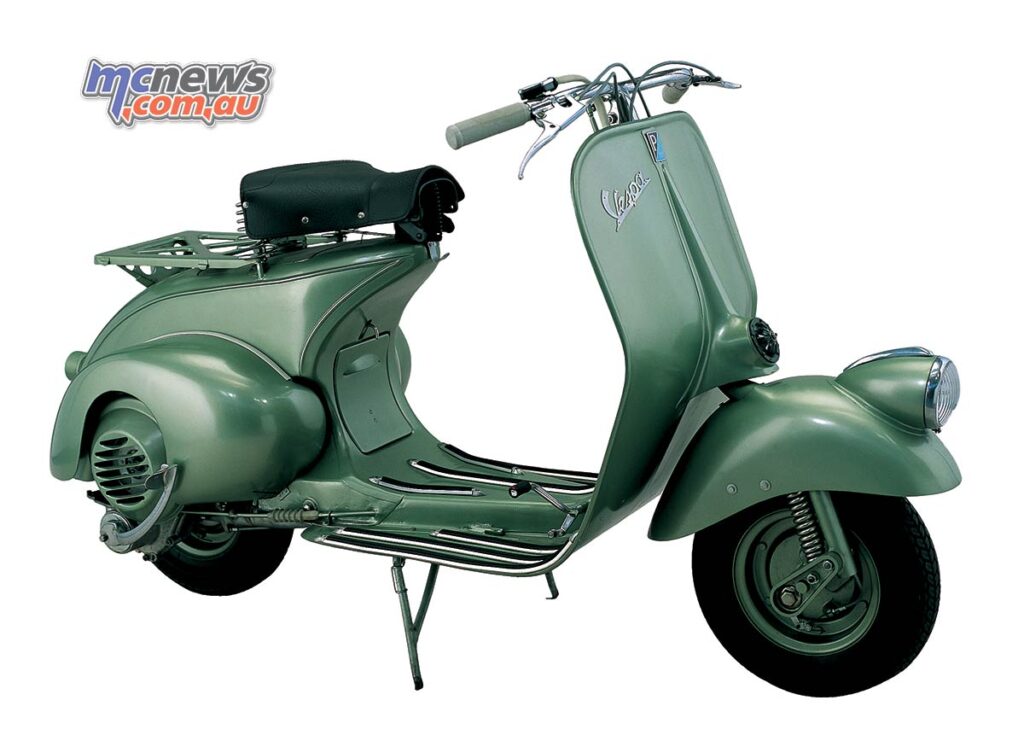
1949 – The Unione Italiana Vespa Riders, incorporating 30 clubs, is formed and holds its first convention.
1950 – Vespa begins production in German under a licence agreement with Hoffman-Werke.
1951 – Vespa begins production in the United Kingdom under license to Douglas of Bristol and in France with ACMA of Paris.
1952 – The Vespa Club Europea is born in Milan to bring the clubs in Italy, France, Germany, Switzerland, Holland and Belgium together. Worldwide Vespa Club membership surpasses 50,000. There are more than 10,000 Vespa service stations around the world.
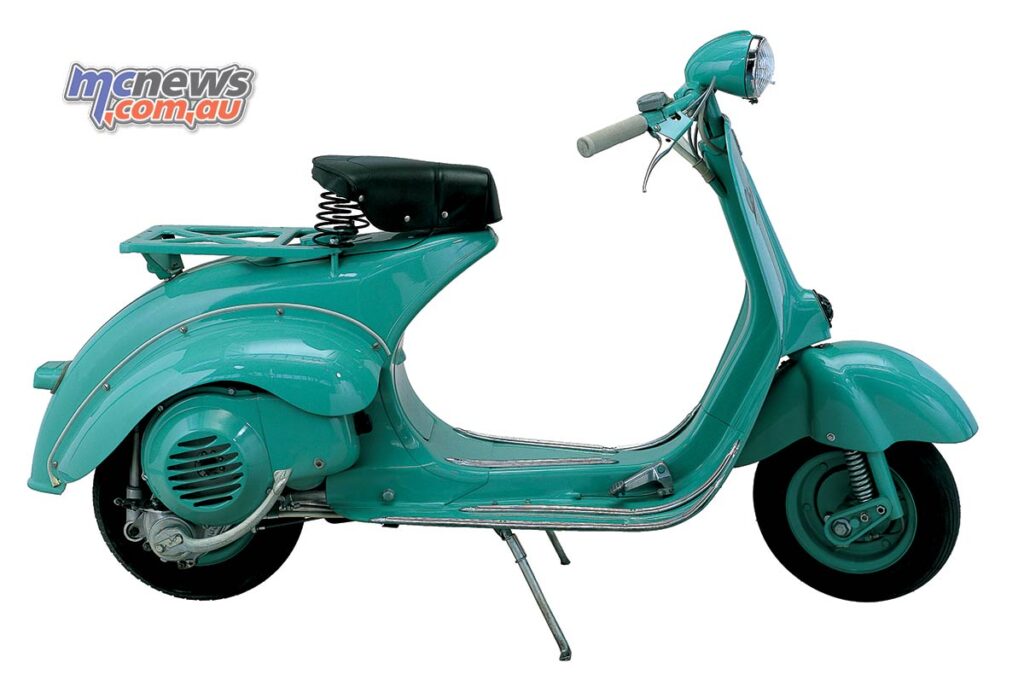
1953 – Vespa 125 is immortalised in the film Roman Holiday by William Wyler with Gregory Peck and Audrey Hepburn.
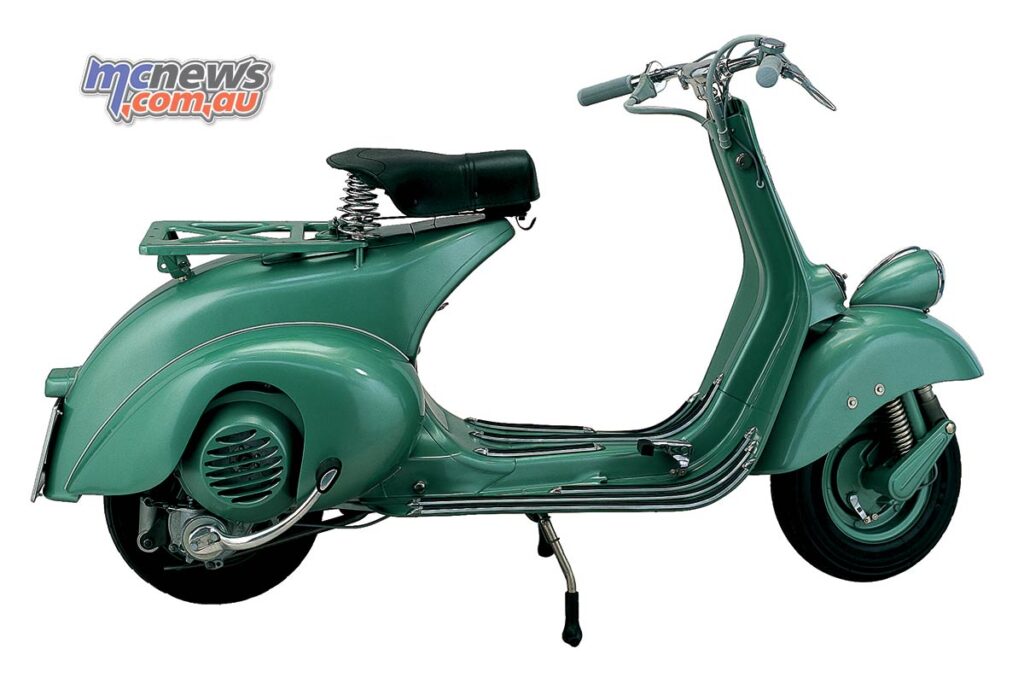
1955 – Vespa GS marks a turning point for Vespa which, for the first time, exceeds the 100 km/h mark, adopts a 4-speed gearbox for the first time and mounts 10 inch wheel rims.
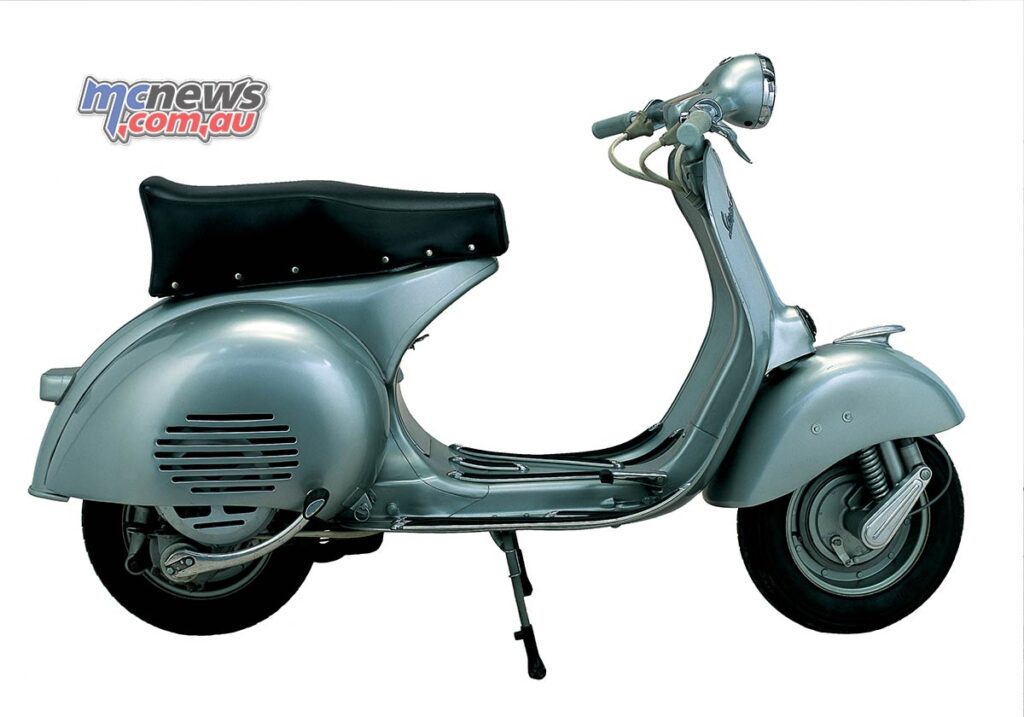
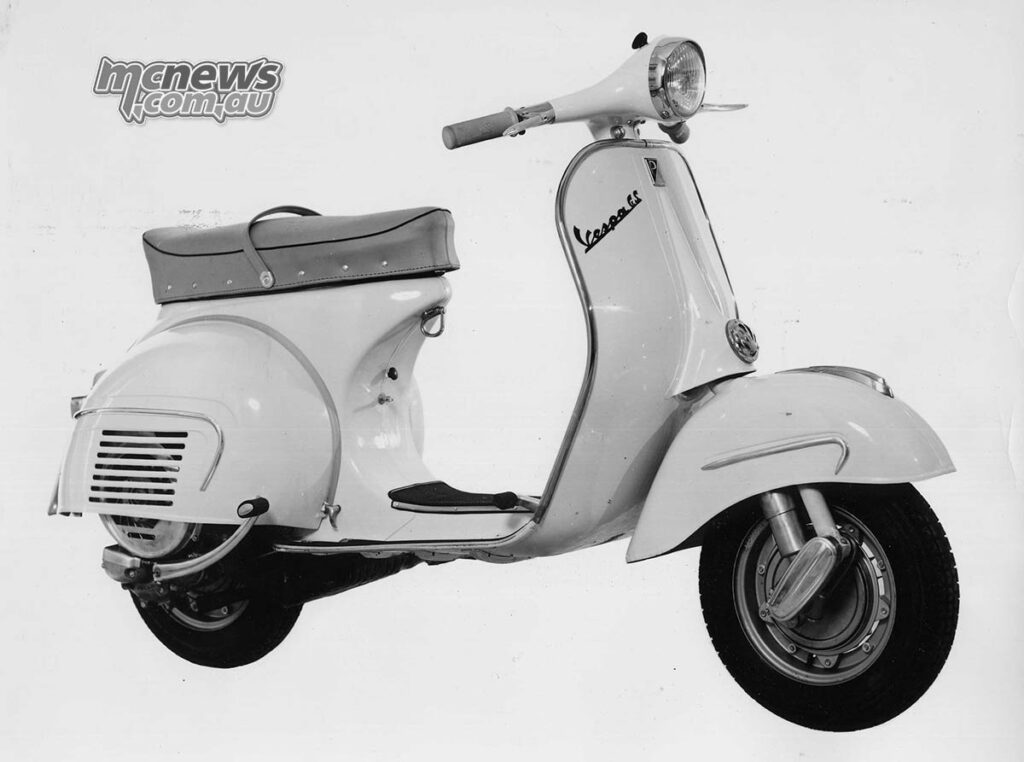
1964 – The Vespino is born – Vespa in the 50 cc engine capacity.
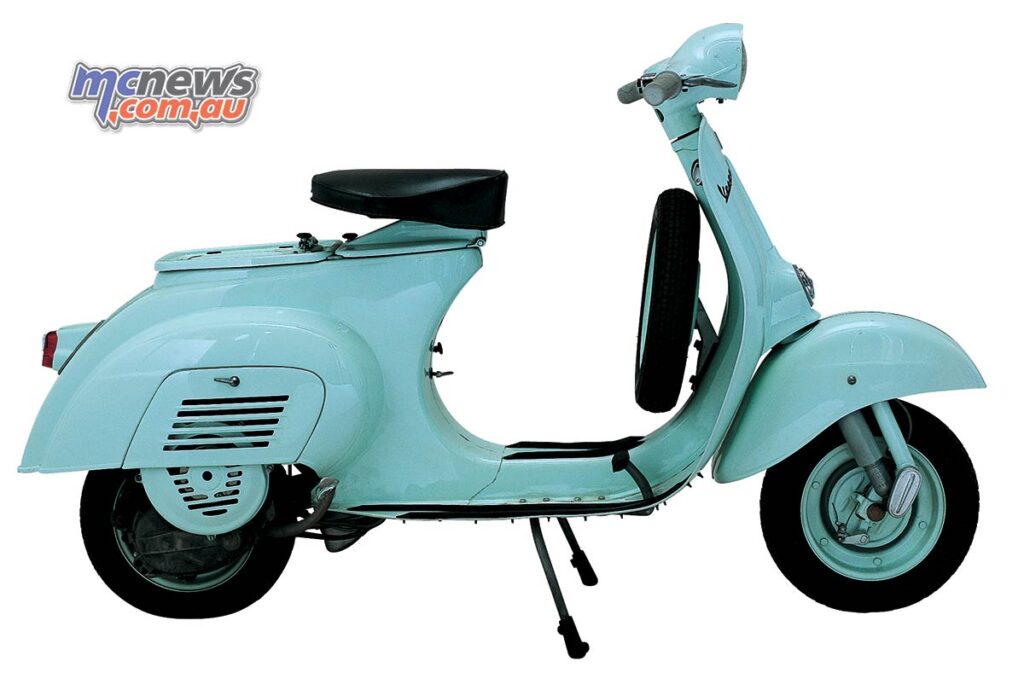
1965 – Vespa sales surpass 3.5 million.
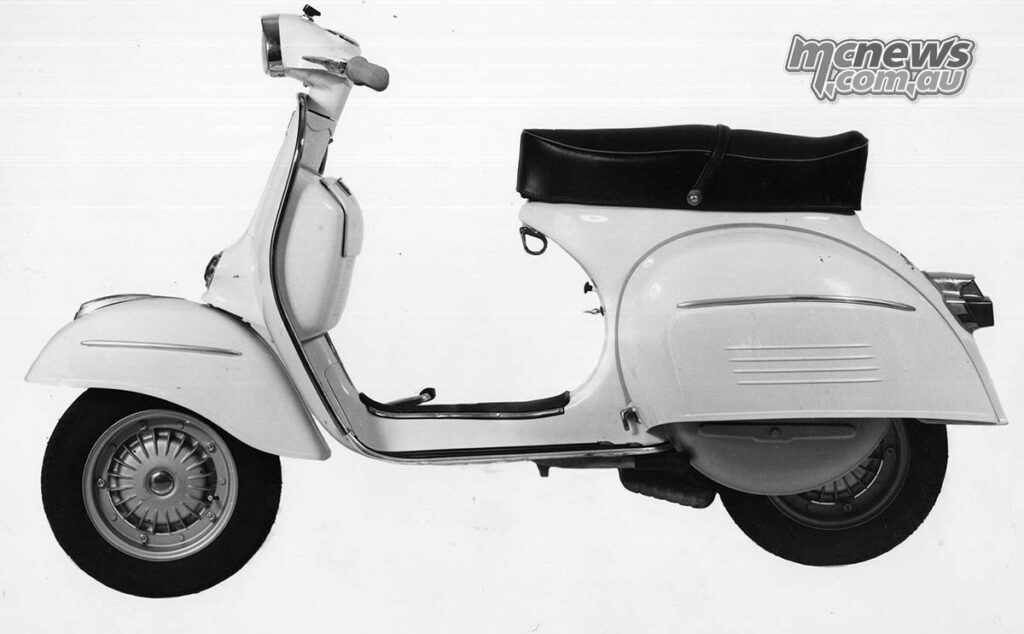
1968 – The “Chi Vespa mangia le mele” campaign (Those who Vespa eat the apples) revolutionises the advertising world.
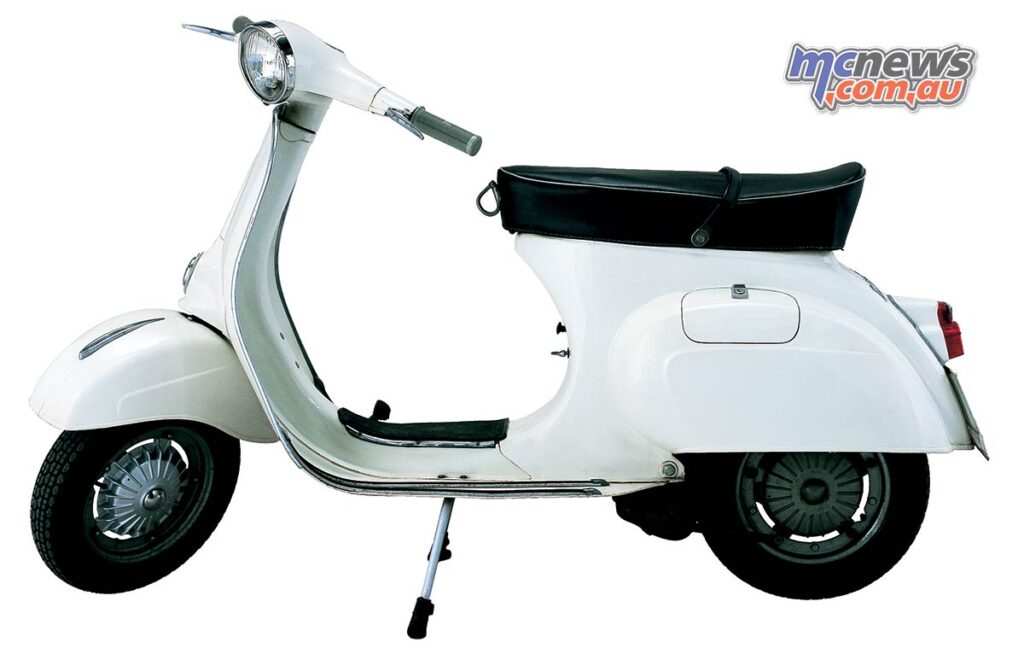
1968 – Vespa Primavera is one of the longest-lasting Vespa models and the vehicle of new generations all over Europe.
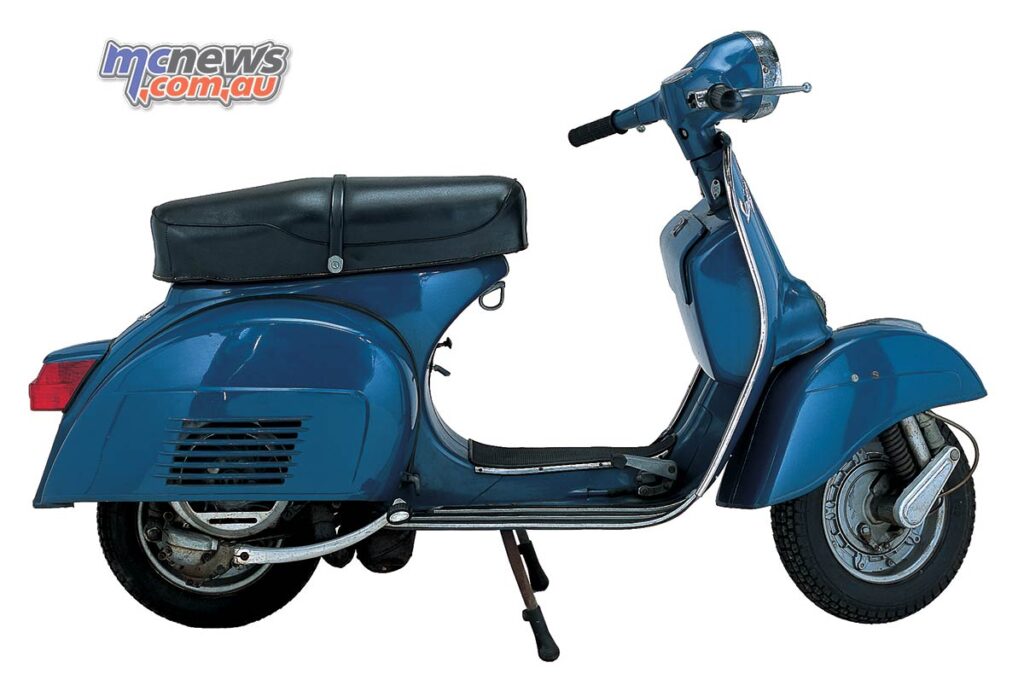
1976 – Vespa Primavera 125 – ET3 is the first scooter with electronic ignition.
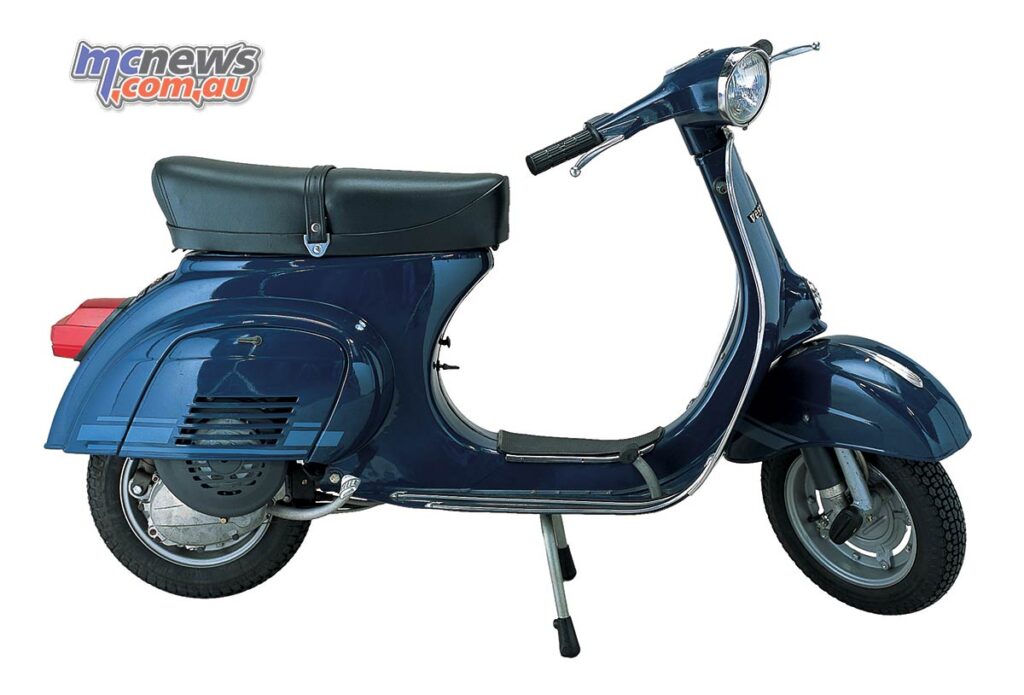
1978 – Vespa PX is born in the three-cylinder “classic” 125, 150 and 200 cc versions. It would be the most sold model in Vespa history with more than 30 million units.
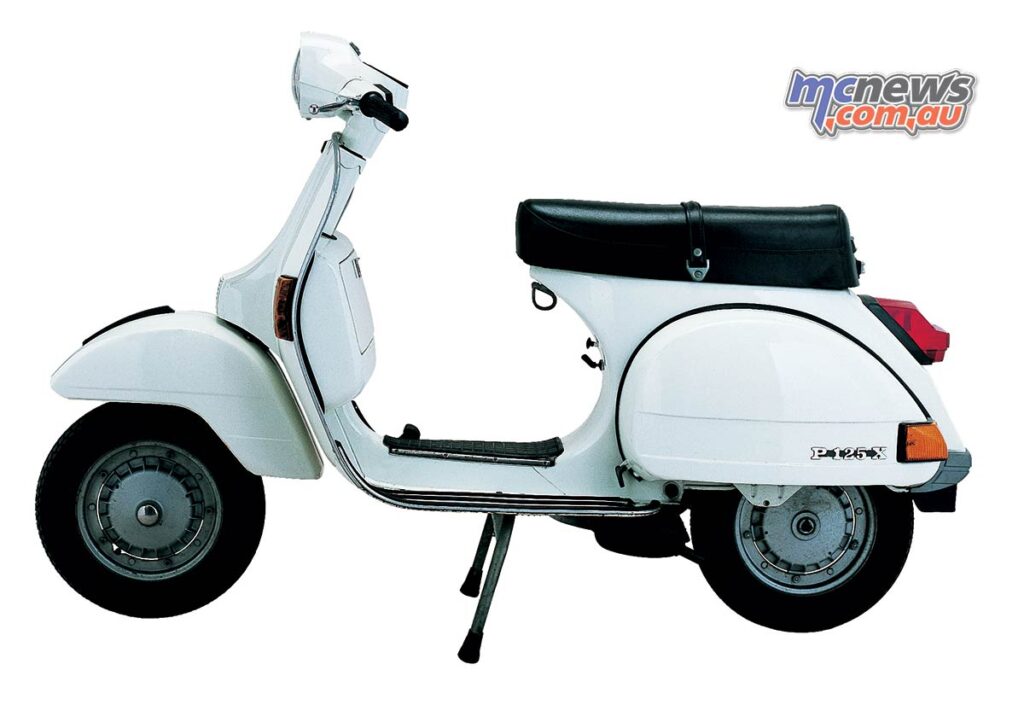
1980 – Four Vespa PX units participate in the Paris-Dakar, the most epic and gruelling race in the world. Incredibly, ridden by Marc Simonot, one of them would go on to finish the race.
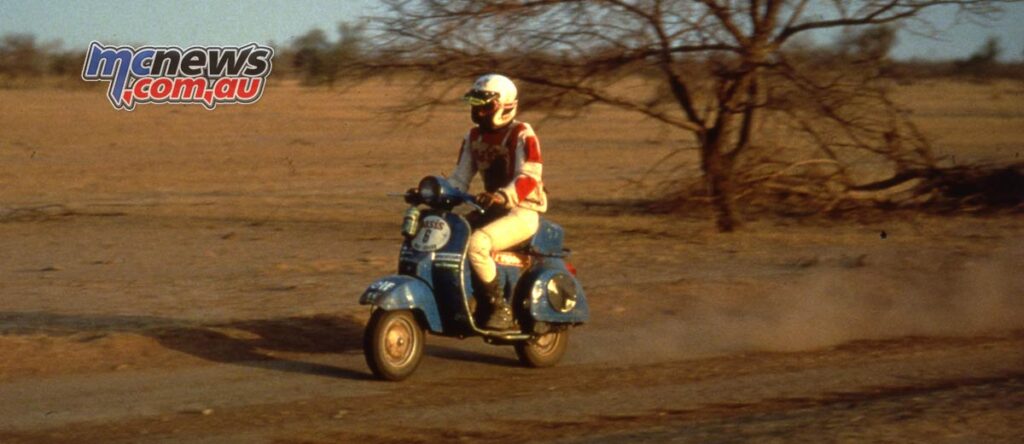
1984 – Vespa PK 125 Automatica is the first Vespa with an automatic transmission.
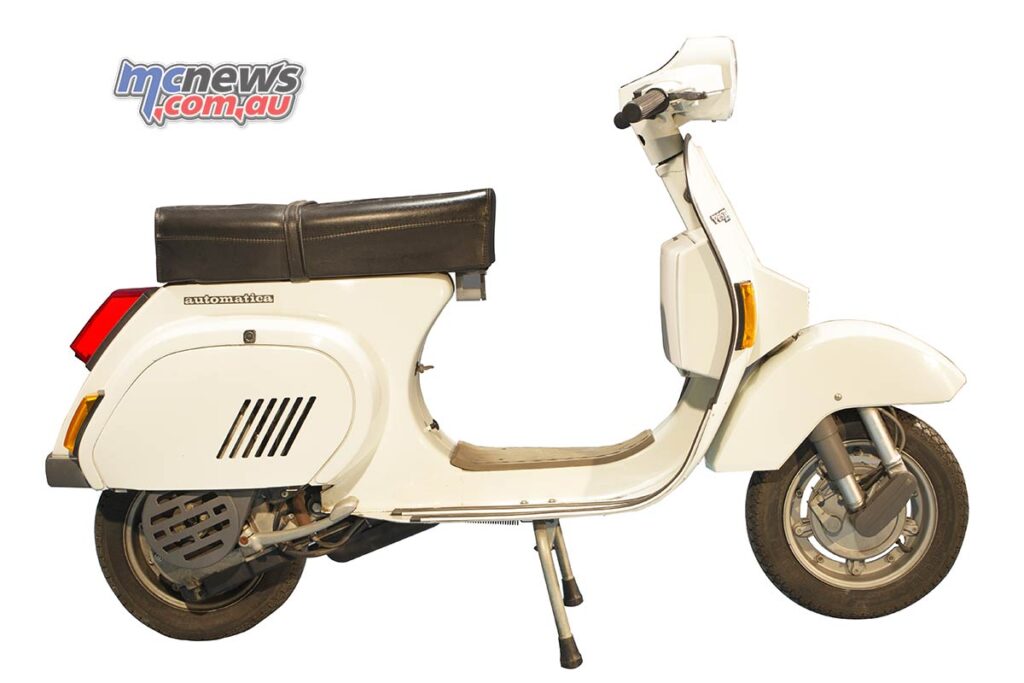
1988 – Vespa sales surpass 10 million.
1992 – Giorgio Bettinelli, writer and journalist, leaves Rome on a Vespa and reaches Saigon in March 1993. He would go on to accomplish several other feats: in 1994-95, also on a Vespa, he covered the 36,000 km from Alaska to Tierra del Fuego. In 1995-96 he travelled from Melbourne to Cape Town – over 52,000 km in 12 months. In 1997 he started out from Chile, reaching Tasmania after three years and eight months, having travelled 144,000 km on his Vespa and crossed 90 countries across the Americas, Siberia, Europe, Africa, Asia and Oceania. All in all, Bettinelli has travelled 250,000 km on a Vespa.
1996 – The new Vespa generation is born with the ET4 125 cc model. For the first time, Vespa adopts a 4T engine and automatic transmission.
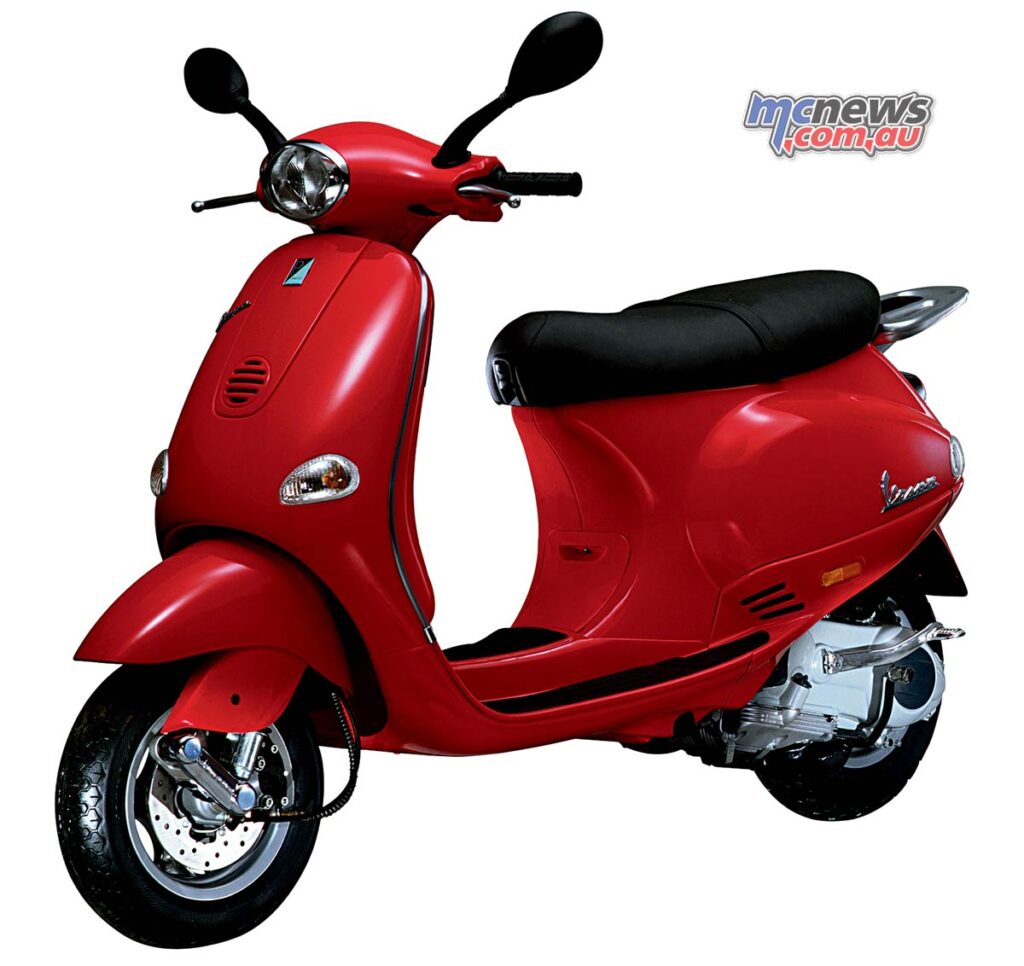
1996 – The number of Vespas sold surpasses 15 million.
1997 – Vespa ET2 (50 cc) is launched.
1998 – Restyling and front disc brake for Vespa PX, the most sold scooter model in the world (over two million units from the time it was launched).
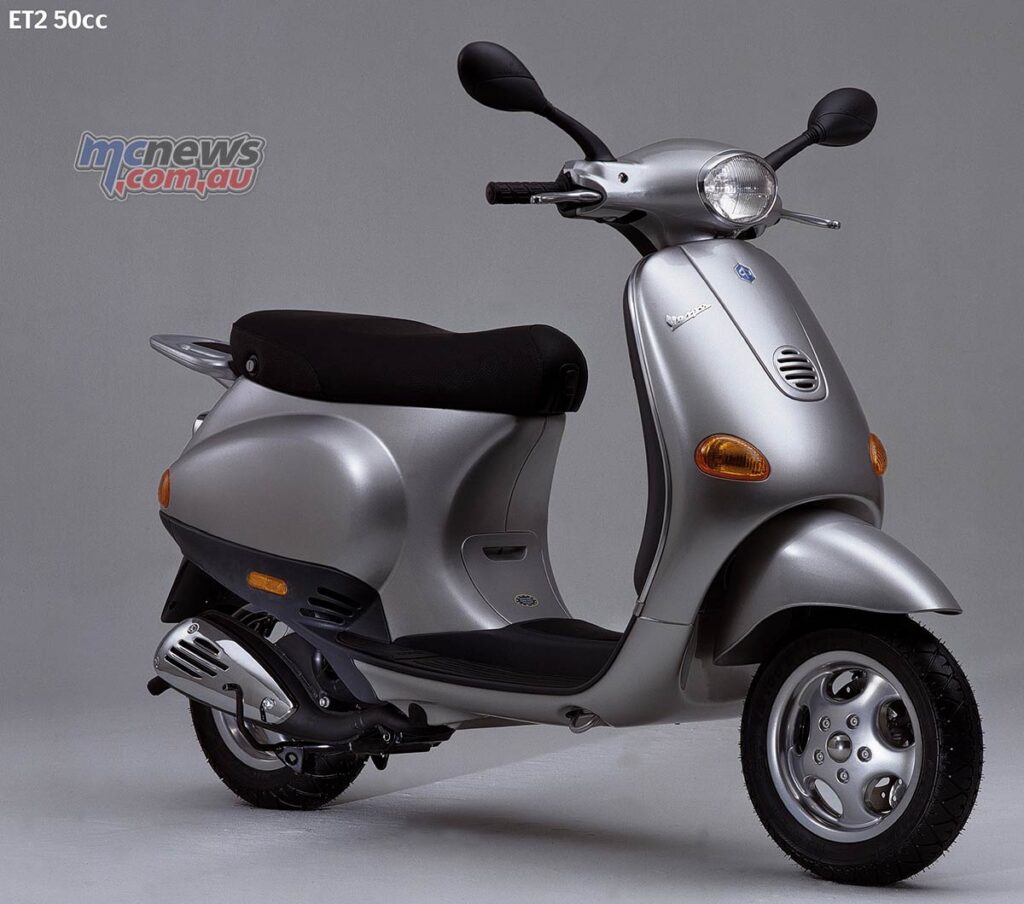
2000 – Vespa returns to the American market.
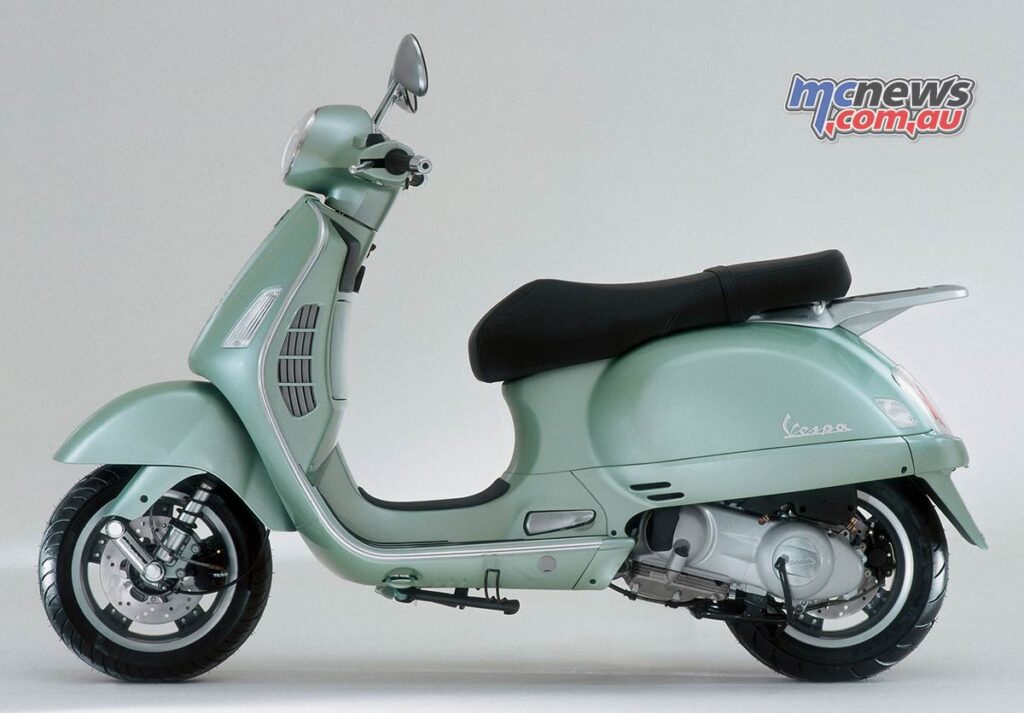
2003 – The return of the Vespone, Vespa GT 125 and Vespa GT 200 are born.
2005 – Vespa LX marks the return to Vespa’s most classic lines.
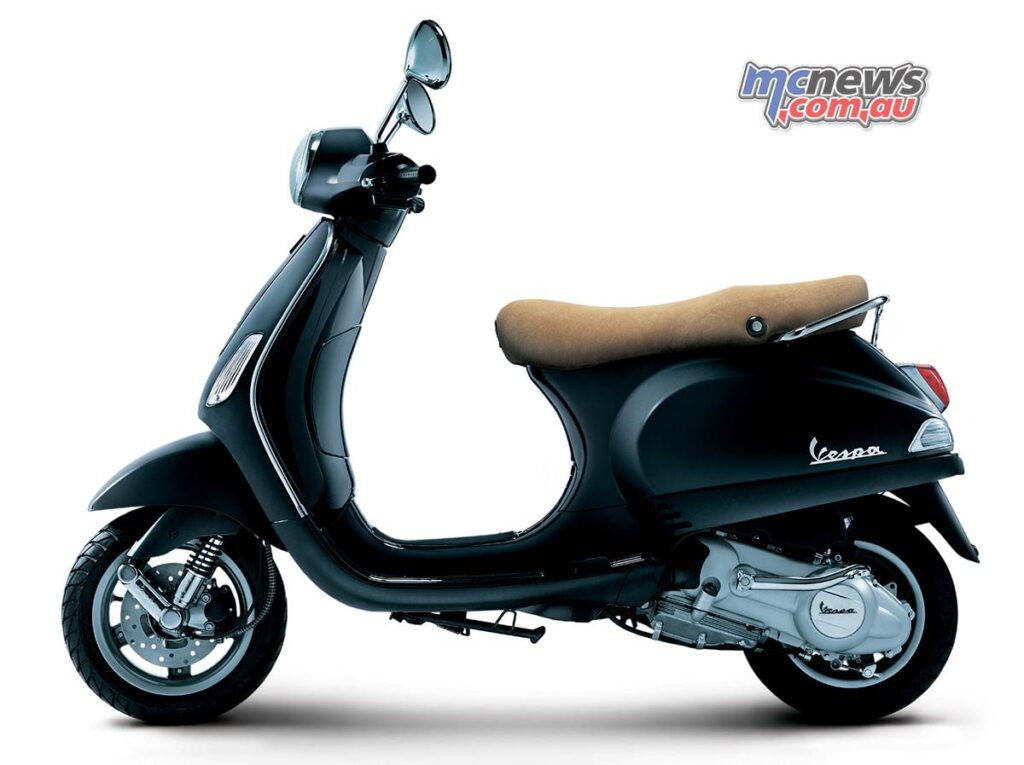
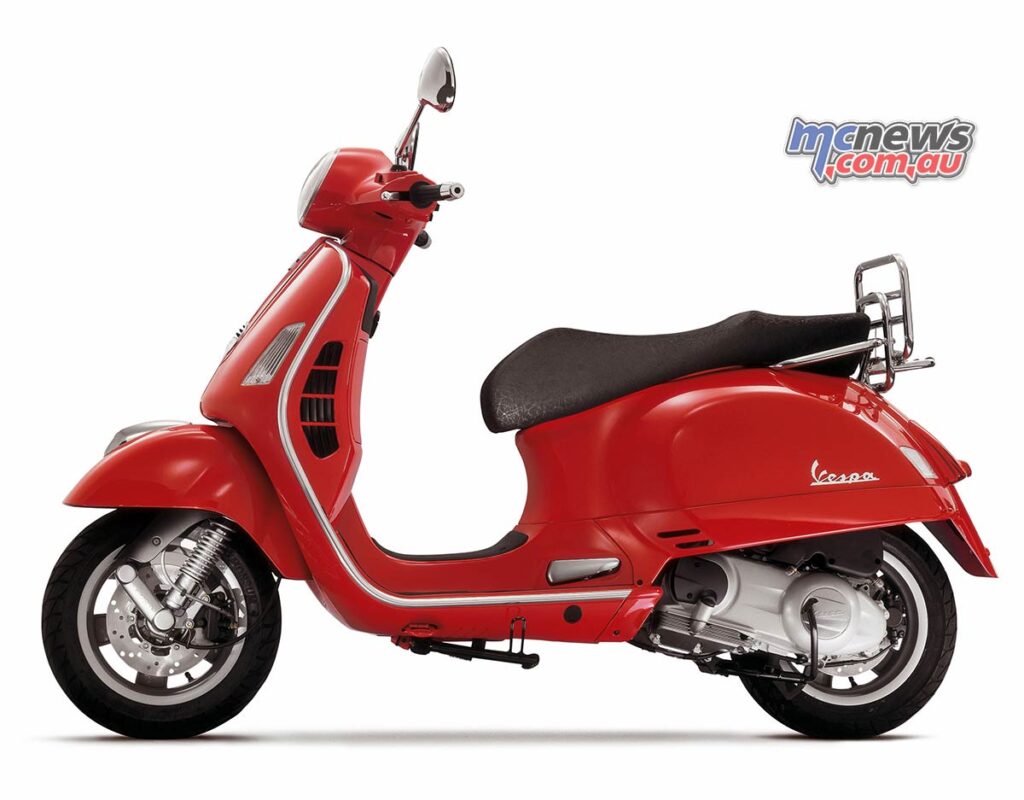
2006 – Vespa celebrates 60 years with the spectacular Vespa 60° special series that brings back the colours and style of the early Vespas.
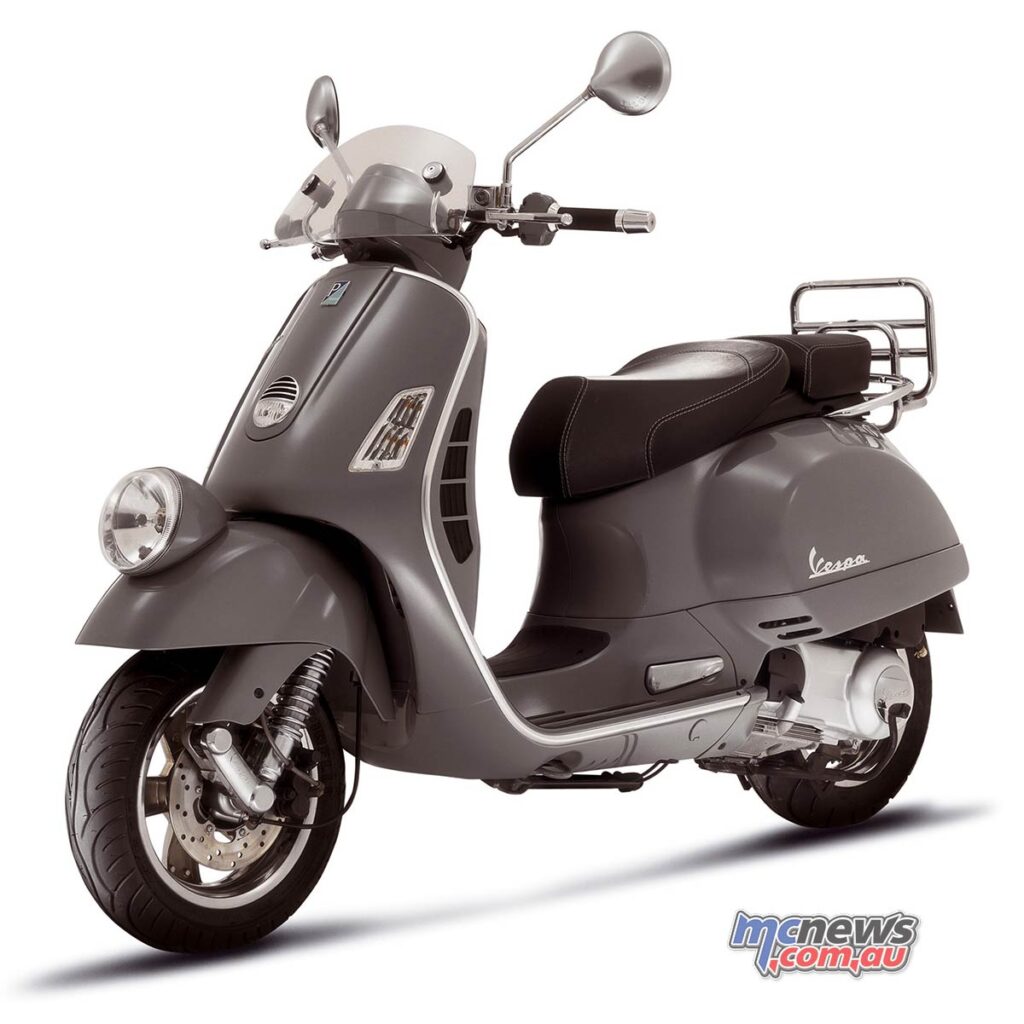
2008 – Vespa 300 GTS Super is the highest performance and sportiest model in history.
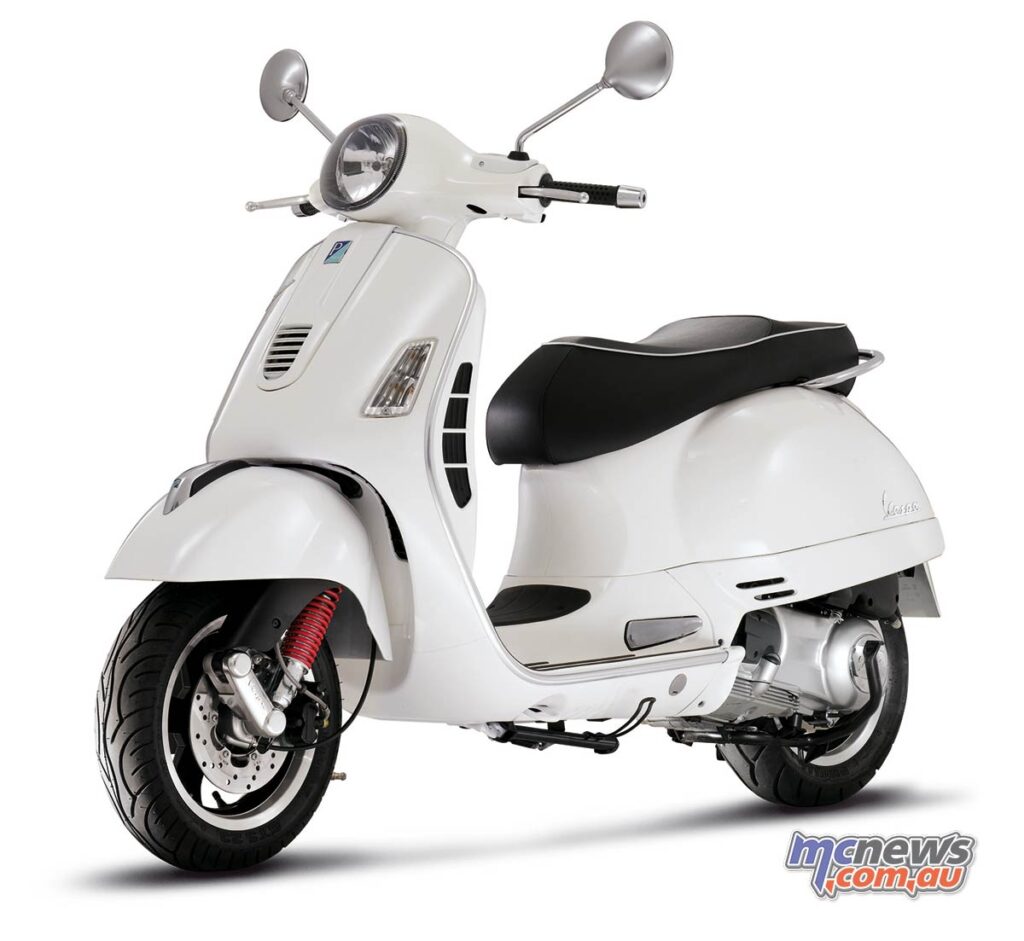
2011 – Vespa 946 is highly exclusive model dedicated to aesthetic and technological perfection, the name of which recalls the year that the scooter symbolic of Italian elegance was born – 1946.
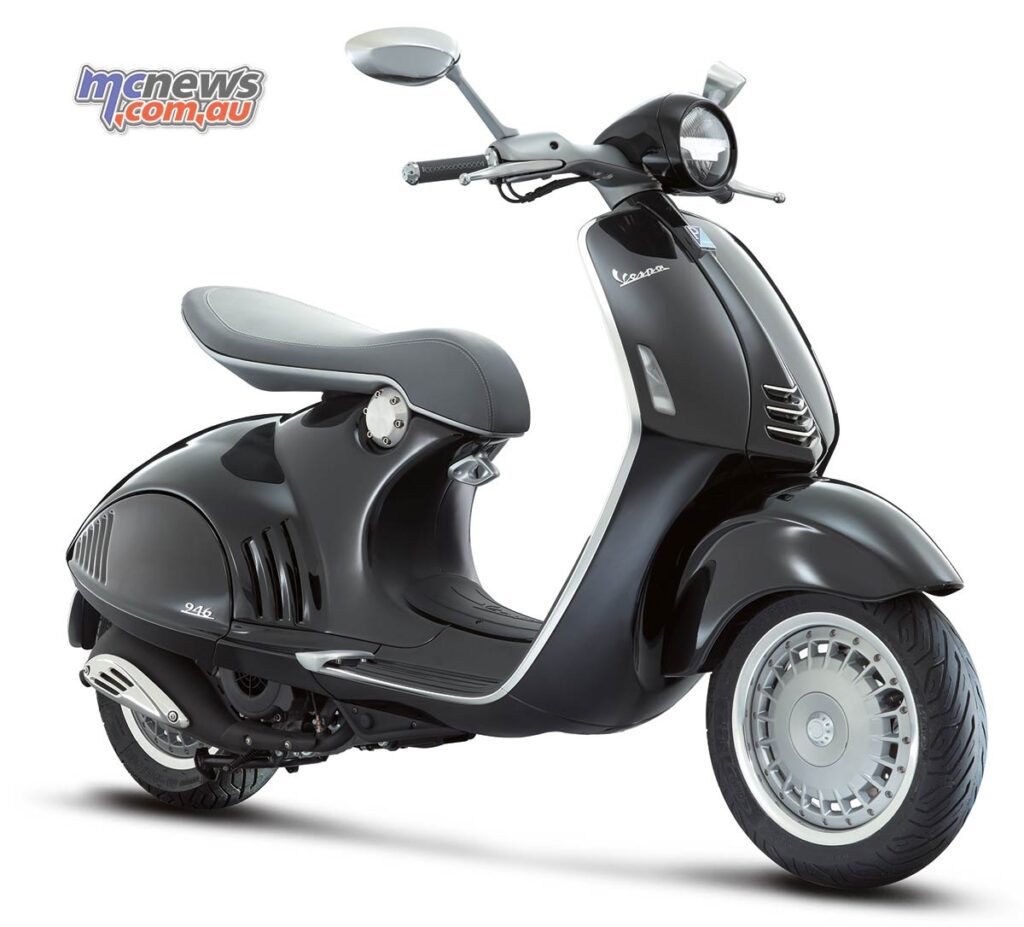
2013 – The legendary Vespa Primavera returns, produced in the 50, 125 and 150 engine sizes, it renews the legendary Vespino.
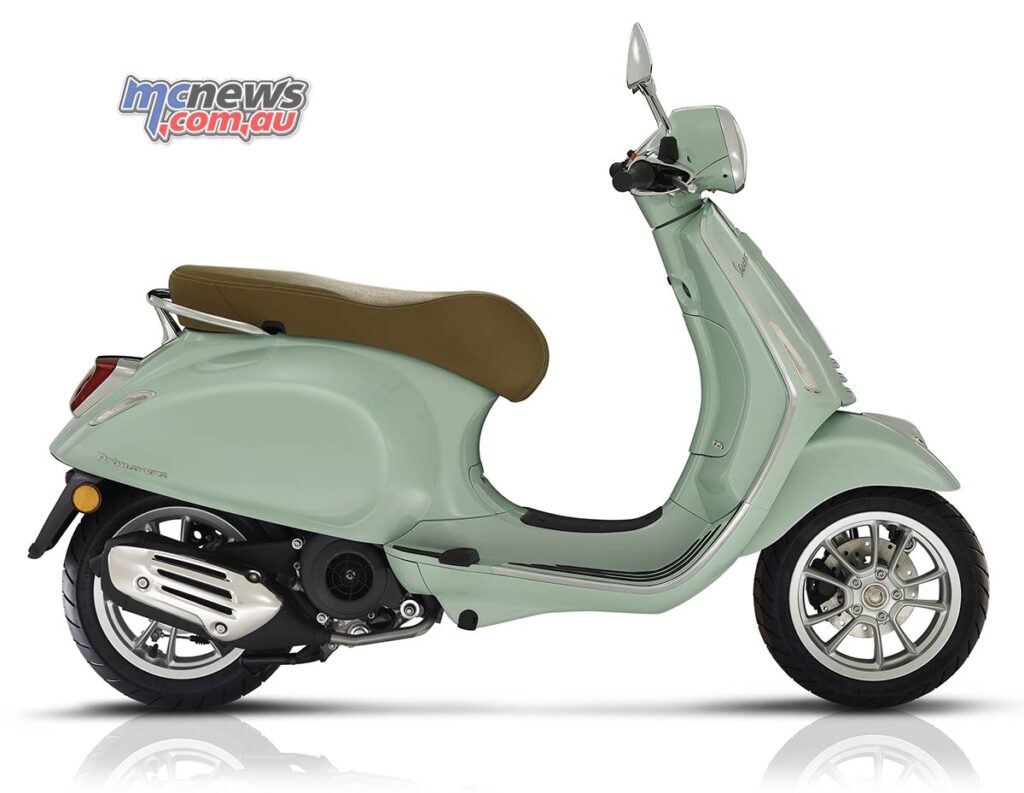
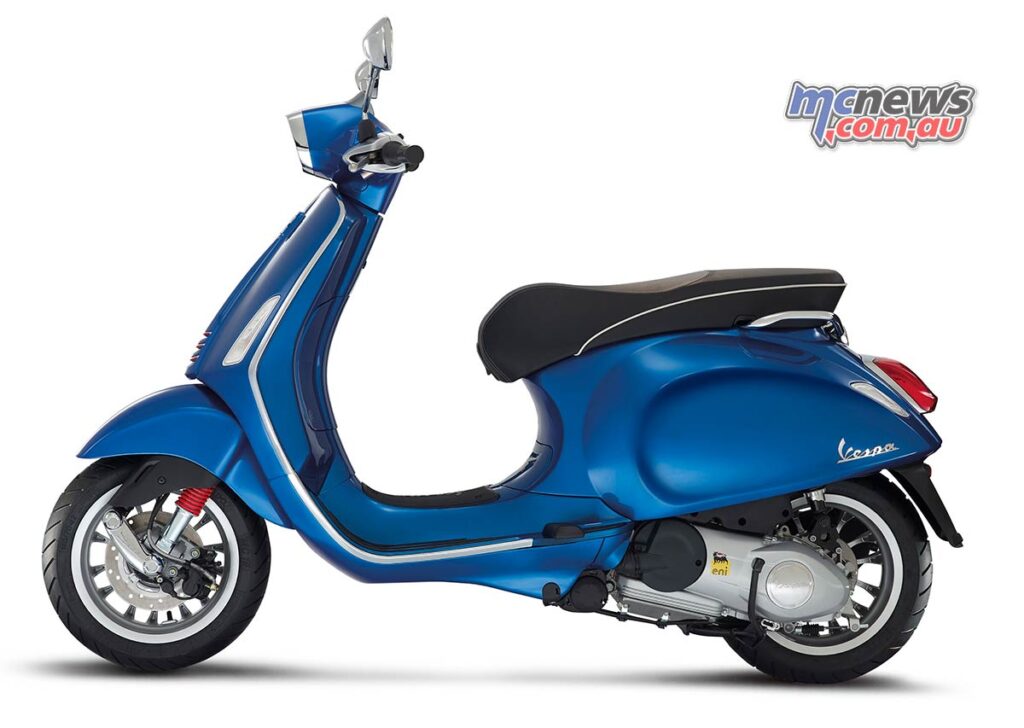
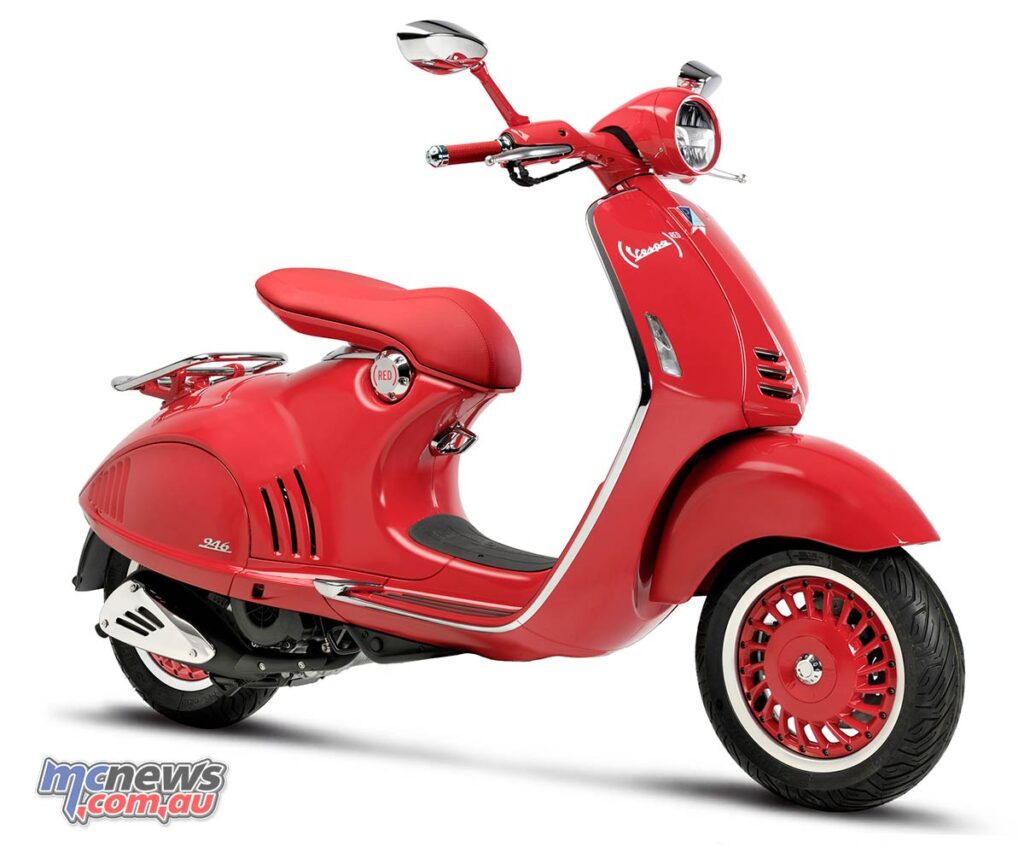
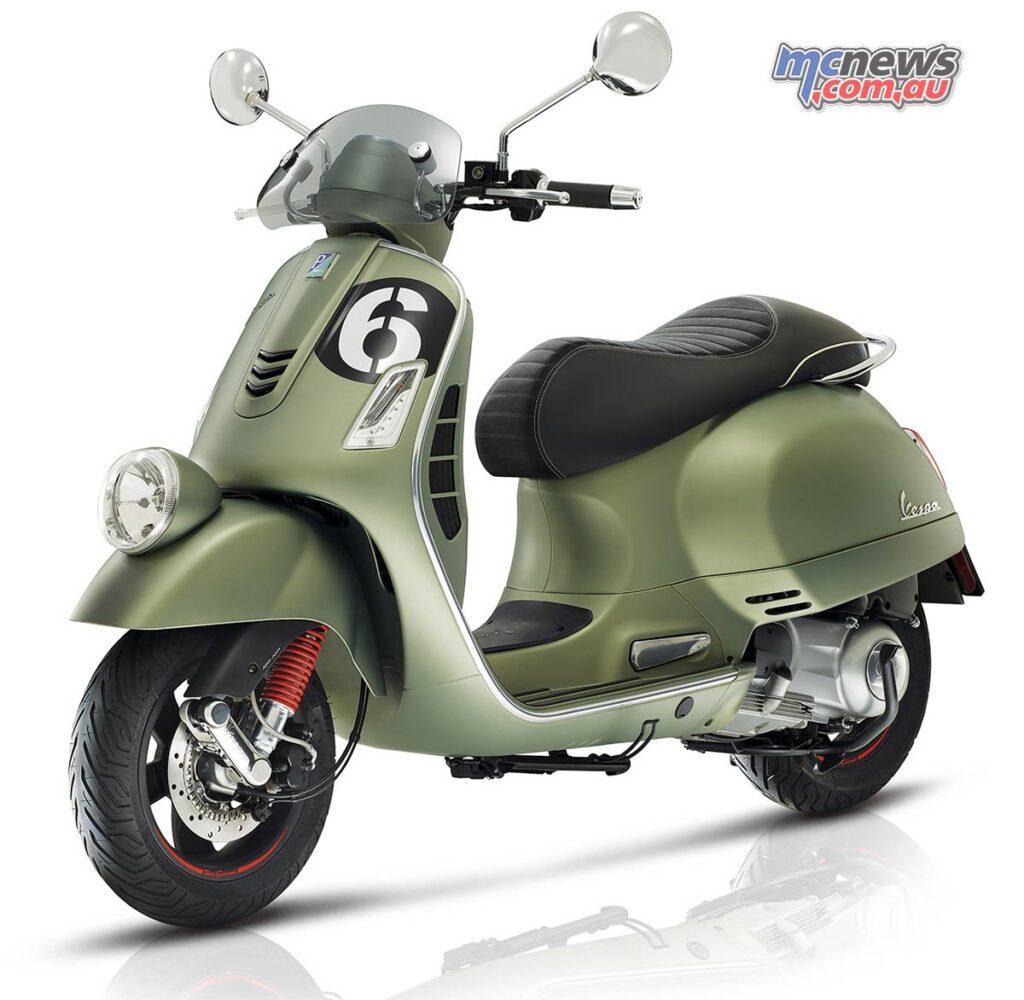
2018 – Vespa Elettrica is born, a modern work of art with a technological heart, destined to change the mobility segment. Completely silent and easy to ride, and produced entirely in Pontedera, it represents the revolutionary and contemporary soul of Vespa.
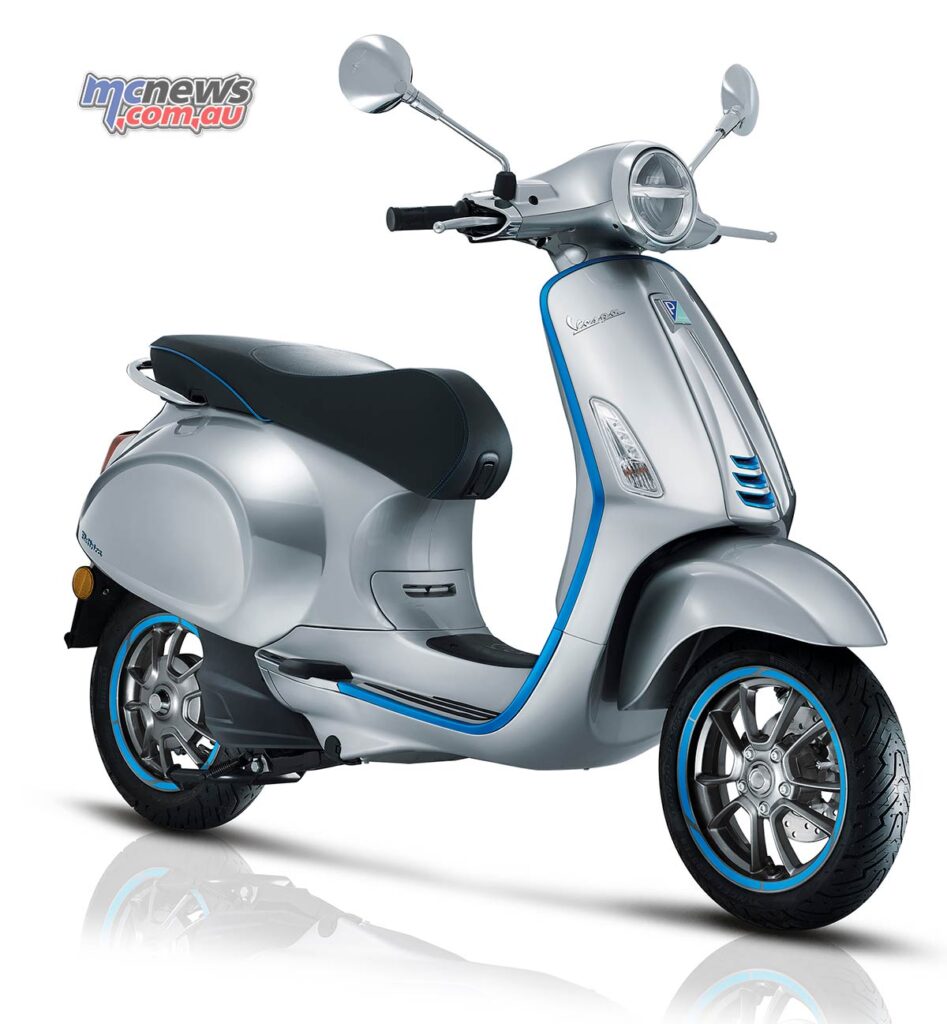
2021 – Vespa reaches 19 million units produced and celebrates 75 years with the Vespa 75th special series.
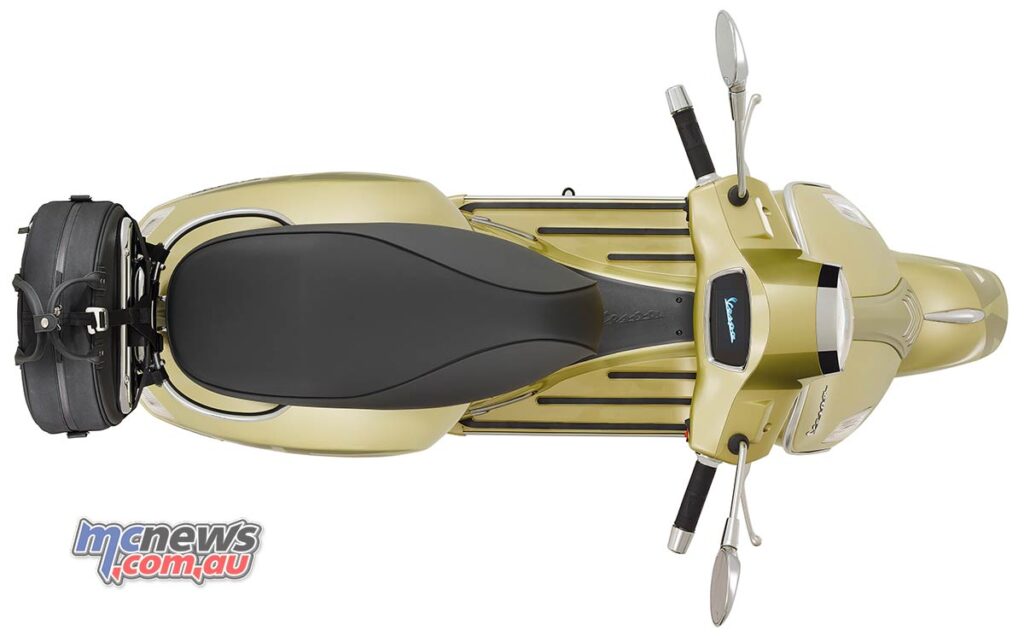
Source: MCNews.com.au
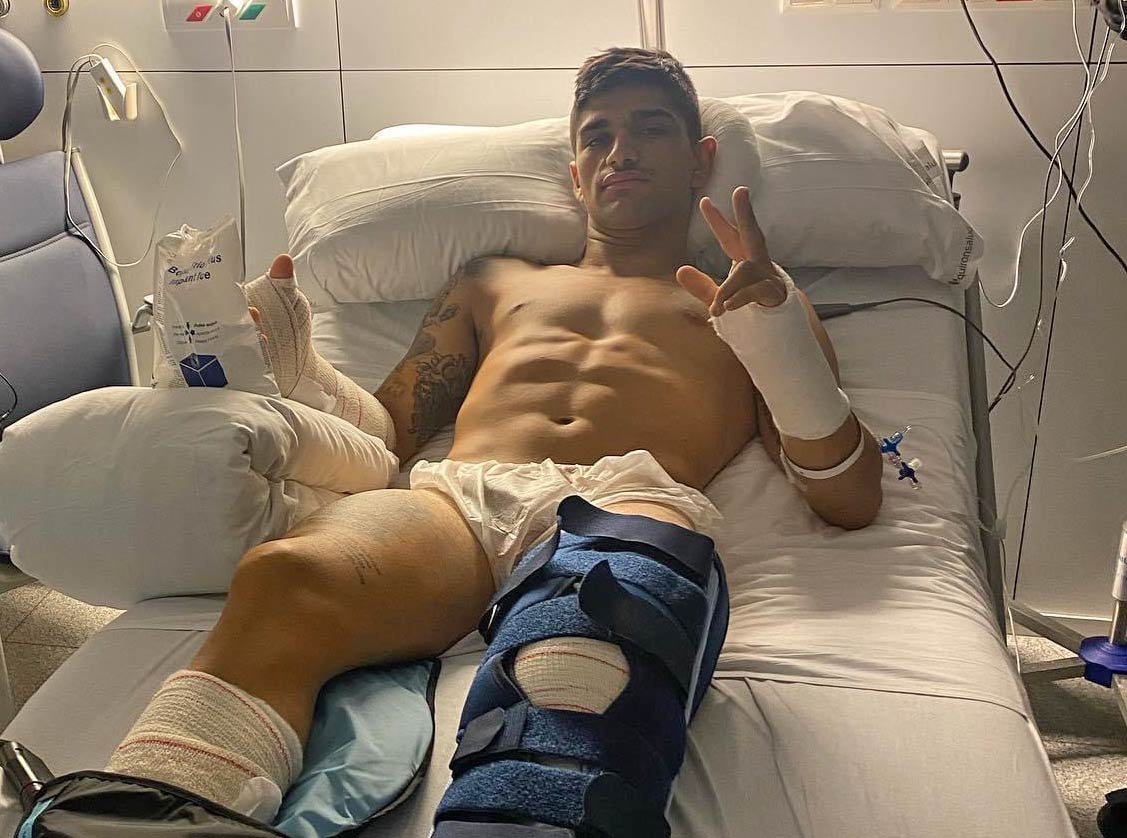
Jorge Martín has undergone extensive surgery by specialists Dr. Xavier Mir, Dr. David Campillo and Dr. Joan Carles Monllau at the Traumatology Department (ICATME) of Dexeus University Hospital in Barcelona.
The Spanish rider had suffered several fractures: to the scaphoid, the first metacarpal of the right hand and the right ankle, which were surgically reduced, while the fractures to the pyramidal bone of the right wrist and the fifth metacarpal of the left hand were reduced and immobilised, without the need for surgery. The fracture to the left tibial plateau was reduced by arthroscopy.
Jorge Martín will remain in hospital under observation for the next 72 hours, and will then have to observe a few days of rest before starting rehabilitation, with the aim of returning to the track for the Italian GP at Mugello.
Tito Rabat will be taking Martin’s place for the Spanish GP in Jerez de la Frontera, which is scheduled to be from the 30th of April to the 2nd of May at the Angel Nieto circuit. The Catalan rider, who will turn 32 on the 25th of May, was the Moto2 World Champion in 2014. He has also been racing in the last 3 years for MotoGP Team Esponsorama Avintia. He therefore knows both the Ducati bike and the Michelin tyres very well.
This year Tito Rabat is racing in the Superbike World Championship for Barni Racing Team on the Panigale V4 R.
Source: MCNews.com.au
With Phil Aynsley
For those that like their British motorcycles “sporting” here is an excellent example of the breed. This Rickman Rocket III would be quite a rare machine. Only some 1000 BSA Rocket 3s were built in the final year of production, 1972 (although the motor did live on for a few more years in the Triumph T160) – and this engine number indicates it was from around August of that year. Then the fact that Rickman made very few Rocket III frames (all in ’72) adds to the rarity.
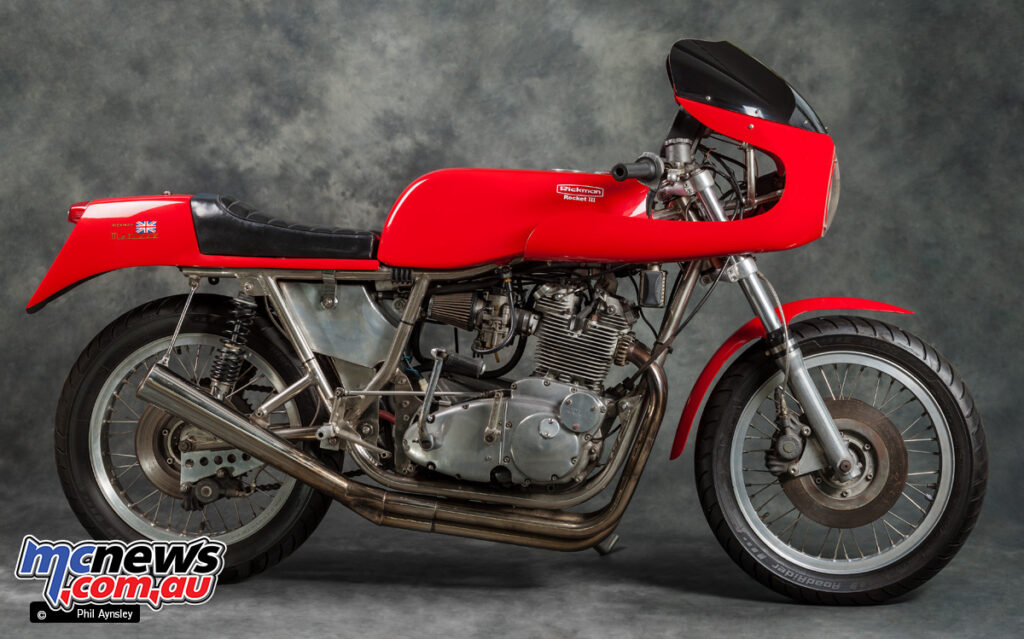
Brothers Don and Derek Rickman began selling motocross frame kits in 1960 then followed up a few years later with road-racing and street designs. Before that they built off-road bikes from a mixture of BSA, Triumph and Norton components. The resulting bikes being named “Metisse”, French for “mongrel”. A very visible trademark of their frames was the nickel-plated finish. The brothers took on a lot of bespoke work, most notably with Weslake in 1972 to produce and sell a eight-valve conversion for the Triumph Bonneville.
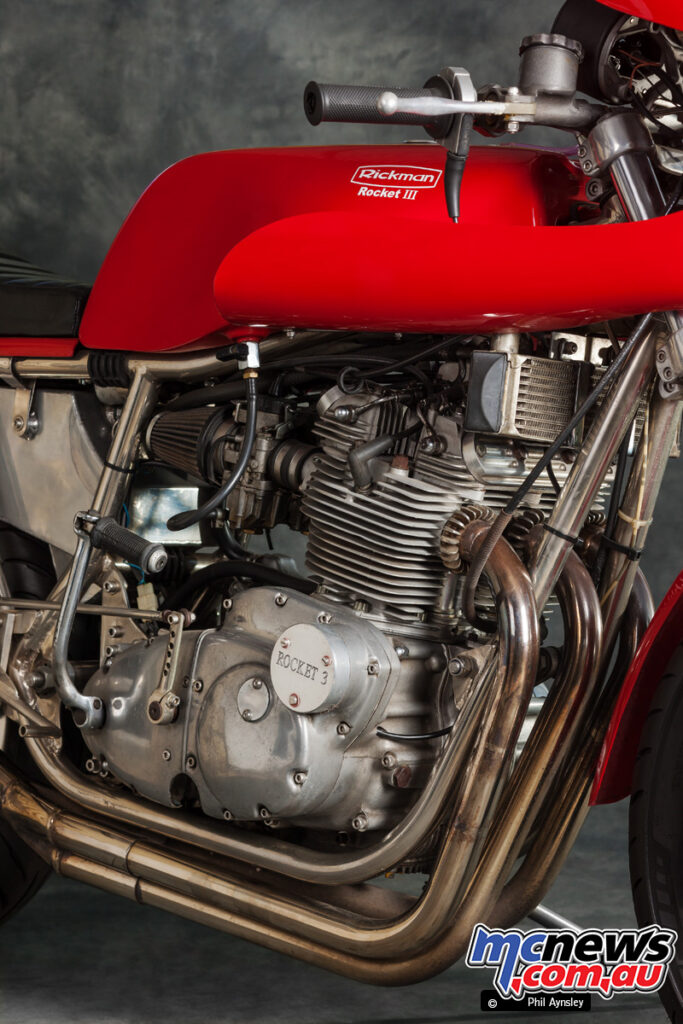
The following year the Rickman Intercepter was released which used some of 200 Royal Enfield 736 cc twin motors they had picked up on the cheap.
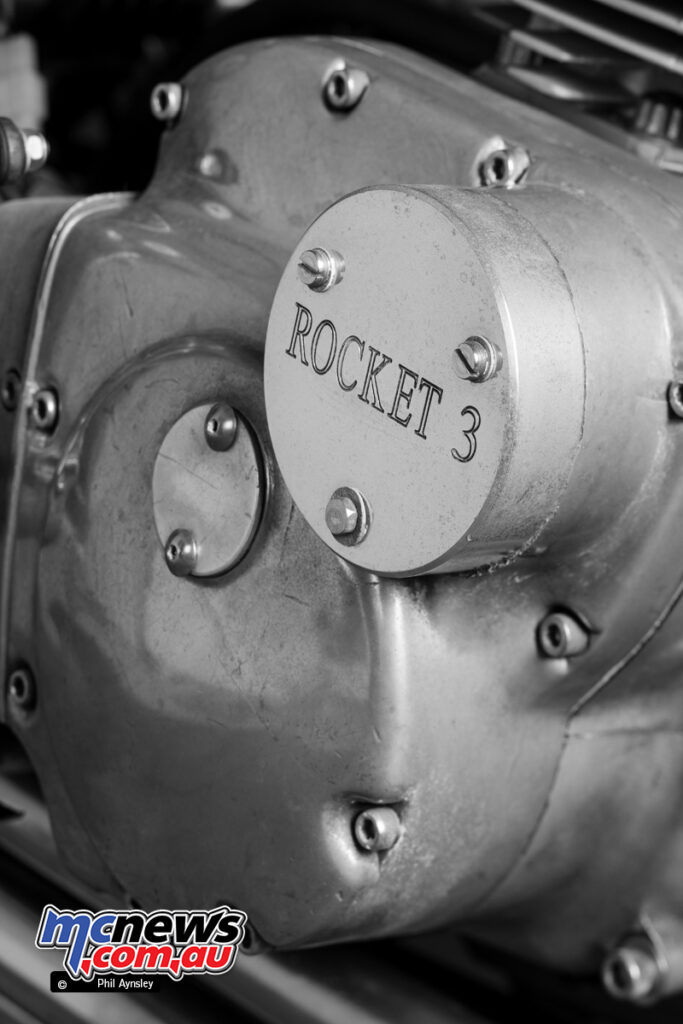
The basic early Rickman frame was made in lower, short wheelbase versions for racing with longer frames for street use. The geometry was pretty much the same with different sized alloy plates used to house various motors such as Norton or Triumph twins.
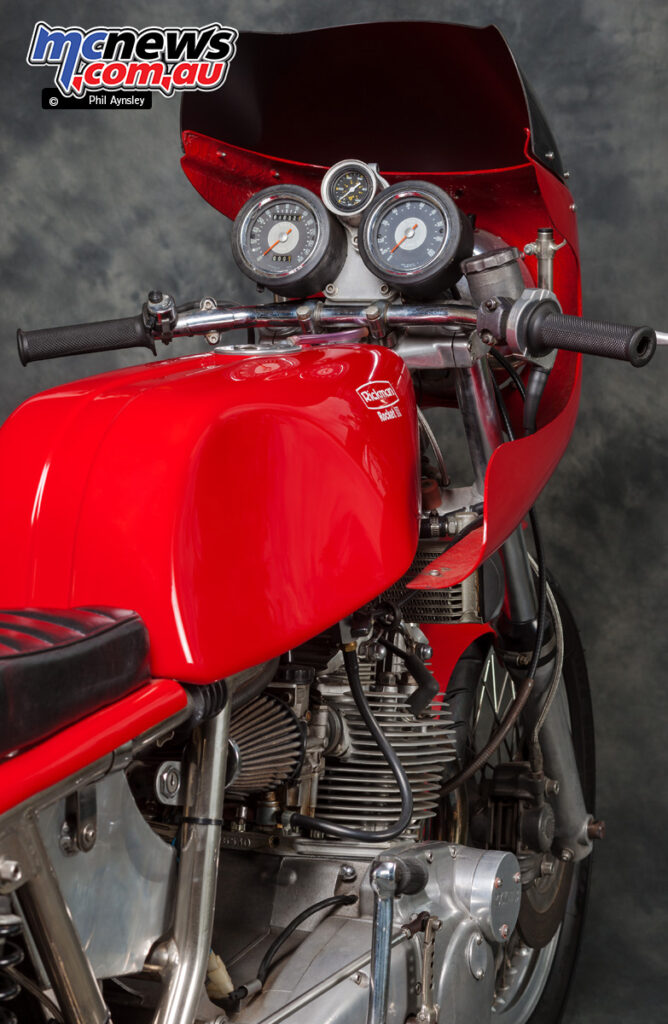
The company then went on to produce fames to house numerous Japanese engines – the Honda CB750 being the best known.
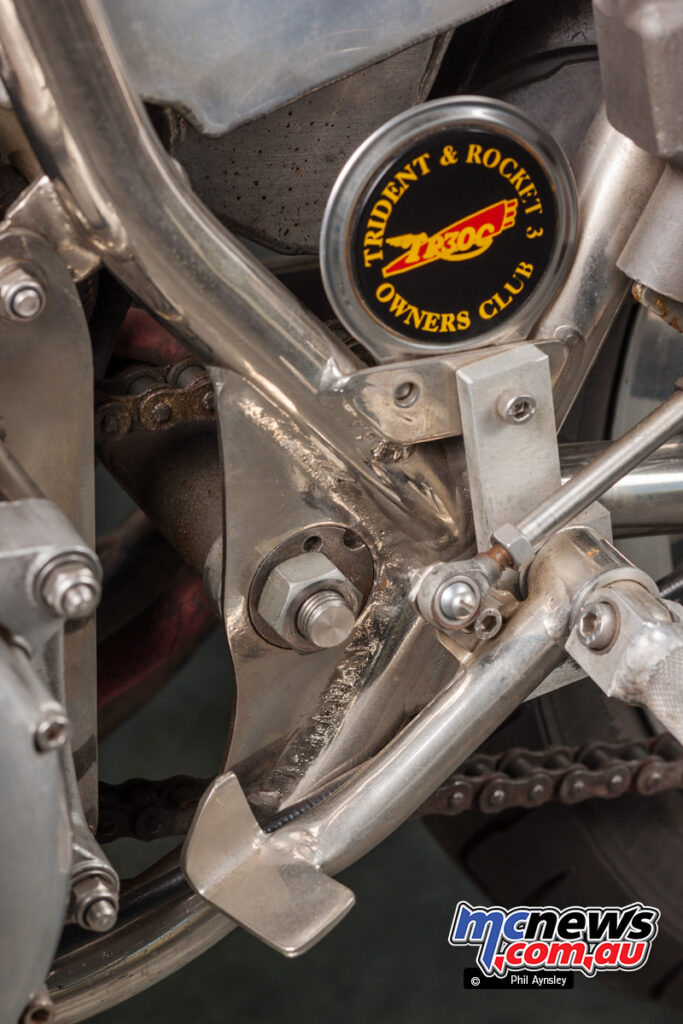
The history of this particular bike (owned by the National Motorcycle Museum in Nabiac) is not known but it is likely is was constructed in the late 1970s, if only due to its use of Amal Mk II carburettors which were released in 1978. Another factor pointing to a later build date is the use of different Betor forks to those supplied with the original Rocket III kits (which were from the company’s Competition Replica range). The Ceriani-looking forks on this bike more closely resemble the forks fitted to the later Japanese engined kits.
Source: MCNews.com.au
The first seven series to be included in the new Road to MotoGP programme have been revealed
The FIM MiniGP World Series begins in 2021 and is designed to unify and standardise MiniGP competitions from around the world under the same umbrella. The newest path on the Road to MotoGP, the series aims to create an equal platform for young riders worldwide and increase their skill and opportunity.
Federations and CONUs (continental unions) from around the world have been applying to be part of the new Series, and the first seven competitions have been revealed: France, Italy, Malaysia, the Netherlands, North America, Spain and the UK.
The seven are the first to have their applications approved and published and Australia misses out for now but there is already a very active scene, particularly in Melbourne, around the Ohvale machinery that will be used in the FIM MiniGP World Series where all riders will race Ohvale GP-0 160cc, the official and sole motorcycle of the FIM MiniGP World Series project.
The good news is that plans are afoot for Australia to be a participant next year. Issues around the supply of machinery and tyres to get here in time for a series to be put in place for 2021 has just not proven feasible in this COVID-19 affected world otherwise we might already be on the list, but it does look almost certain that we will be up and running here in 2022.
2020 Australian Superbike Champion Wayne Maxwell has been a driving force behind the use of the Ohvale machines in Victoria and after he retires from top level competition at the end of 2021 he will be putting a lot of his energy behind the establishment of an FIM MiniGP World Series here in Australia next year.
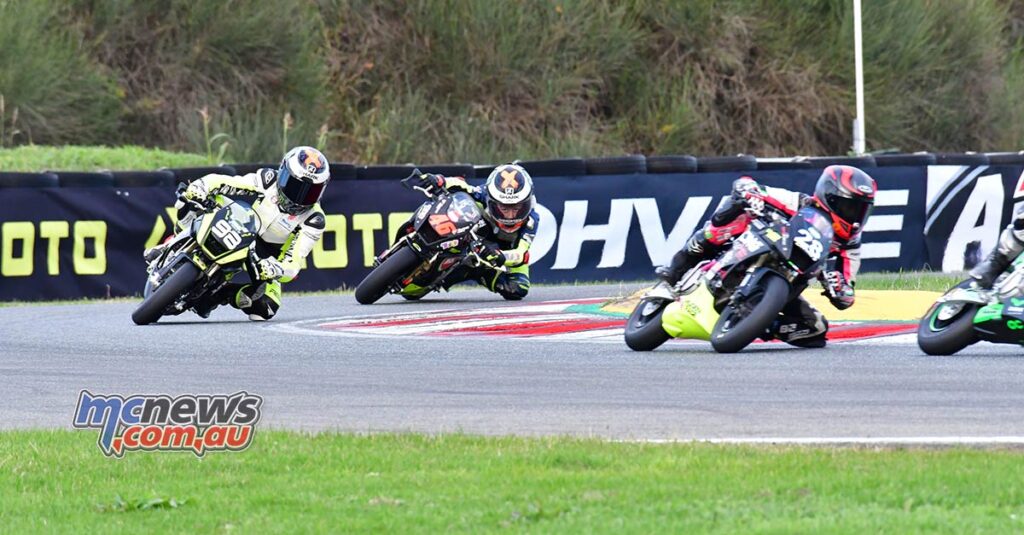
In France, the FIM MiniGP France Series will be called Mini GP France. Racing begins at the end of May at Le Castellet, and the calendar comprises four rounds. From Le Castellet, the Cup will race in Aigues Vives, Fontenay le Comte and Alès.
The FIM MiniGP Italy Series is the CIV Junior and will be the first to start competition on the 25th of April. Five rounds are planned for the Italian series, including two visits to Modena, and the calendar begins in Magione for the 18 riders on the 2021 entry list.
In Malaysia, the FIM MiniGP Malaysia Series will begin at Sepang International Circuit in June and race until September. A four-round calendar is planned with races at four different circuits and 15 riders are already confirmed to take part.
The FIM MiniGP Netherlands Series will begin in Veldhoven at the end of May. A round at Assen prefaces visits to Lelystad and the legendary Spa-Francorchamps, just over the border.
North America will have a continental series named the FIM MiniGP North America Series. Beginning in June, the Cup will race at Road America, Ridge Motorsports Park, Pittsburg International Race Complex and Barber Motorsports Park in the USA, but the Cup is the first CONU application to be approved and is open to the continent.
In Spain, the FIM MiniGP Spain Series starts at the Circuito Internacional Kotarr, Burgos, from the 5th to the 6th of June. More than 20 riders will fight it out at four rounds in 2021.
In the UK, the FIM MiniGP UK Series calendar takes in five rounds across the UK, with more than 15 riders on the Entry List set to compete on kart or short circuit layouts at Thruxton, Donington, Cadwell, Snetterton and Silverstone beginning at the end of July.
The FIM and Dorna Sports have received further applications from other federations and CONUs, with the inclusion of more Cups to be announced by the 30th of April.
The final deadline for federations and CONUs to submit applications to be part of the new FIM MiniGP World Series is the 23rd of April.
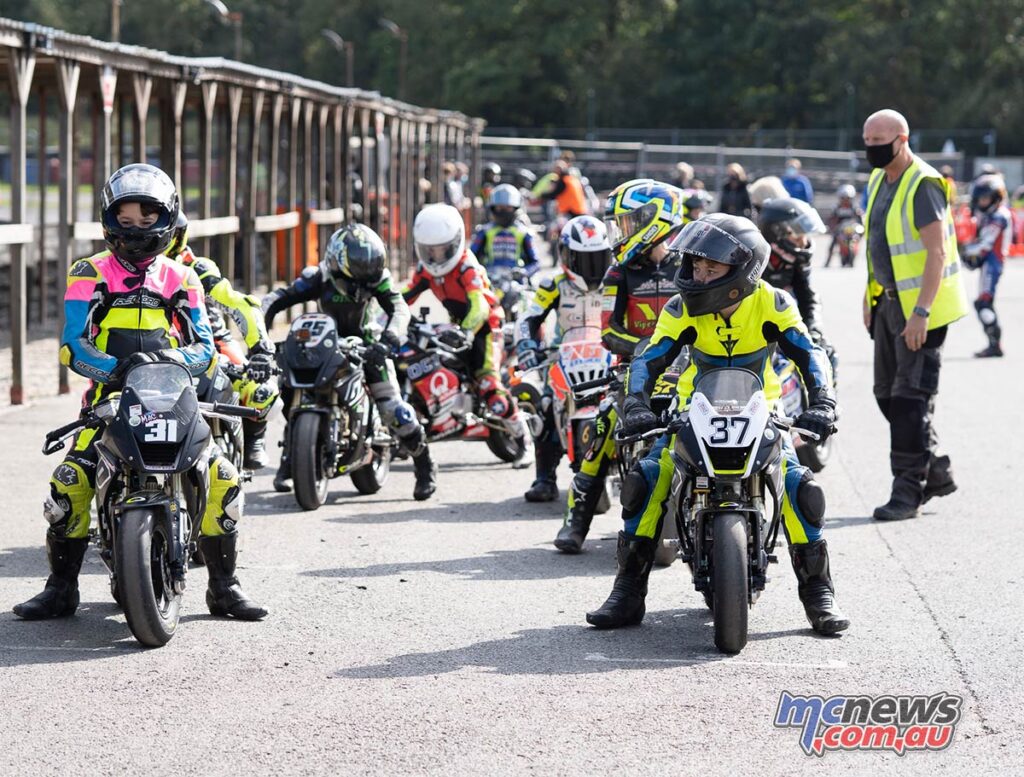
Source: MCNews.com.au
Pata Yamaha and KRT riders this week took to the track at Aragon and got plenty of laps in on the afternoon of day one before rain blew in to rule out any useful test data being obtained from the planned second day of testing.
Andrea Locatelli completed 59 laps yesterday, utilising just a half day of testing from 1pm onwards as the morning’s wet conditions improved and enabled the team to finalise development testing for the 2021-specification Yamaha R1 WorldSBK.
Andrea Locatelli
“Yesterday I had a strange feeling with the bike which was maybe due to the condition of the track. It was very different compared to the last test, but in the end we continued to work on the bike and were able to confirm some new parts for 2021. This was the main thing to work on for now, even if for me the performance level yesterday was not perfect. I am sure that when we come back here, we will have some areas for improvement and will also try and improve the feeling on the bike. But I am happy for this test because we were able to work on the data to confirm some 2021 developments, and now we will return with a clear focus on the performance.”
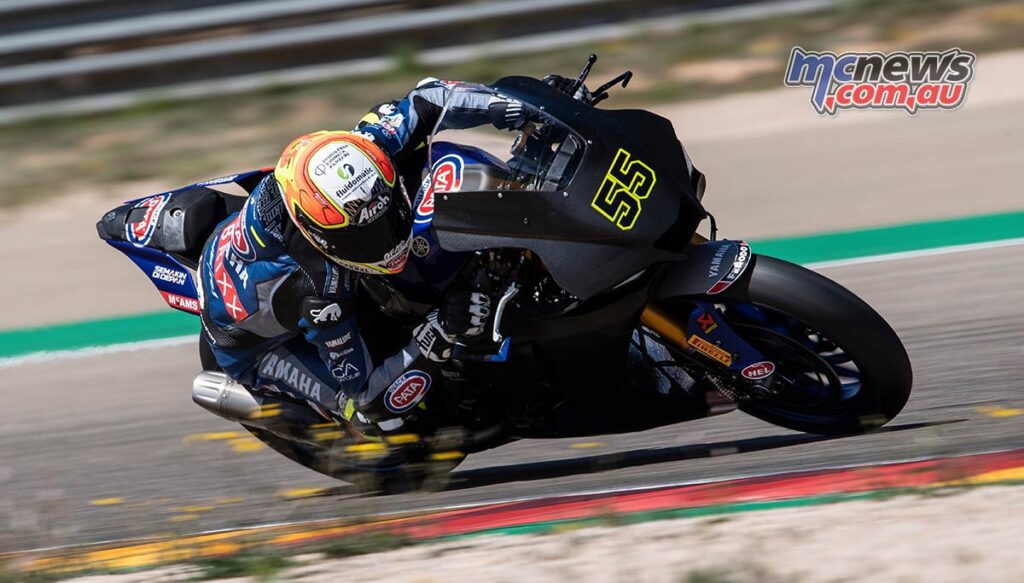
The shortened running means that Pata Yamaha with Brixx WorldSBK will return to MotorLand Aragón as a complete team, with both Locatelli and Toprak Razgatlıoğlu, next month with track running from Tuesday 4 May.
Andrew Pitt – Locatelli Crew Chief
“Turned out we didn’t get a lot of running but fortunately we got out yesterday for a full afternoon of dry time. It seemed as though track conditions changed quite a bit due to different temperatures and a lot of car testing here in between the two tests. We left the first test here at Aragon very happy with the feeling and quite positive going forward into this next test, with the aim of trying to refine the package a little bit. We looked at a lot of data with Loka and together with our Öhlins technician Luca [Federzoni] to assess and look at areas where he could improve. The afternoon unfortunately became a little bit of a rush, we tried to get as much done as we could – and due to the fact that Toprak was not here, the responsibility of helping to define the final pieces of the 2021 package fell largely on Loka’s shoulders. We had a lot of components to work through, and kept him in “workman” mode providing clear feedback and ticking things off the list. Loka, as a racer, obviously wanted to improve his performance and it is a delicate balance to manage, but we got through every item on the list for Yamaha and additional feedback for Pirelli. It was very constructive from that point of view even if we did not get the chance to focus on pace. Our next test before the first race will be working on giving Loka a stable bike and work on his outright pace so that he can come to the first event full of confidence.”
Razgatlıoğlu returned to Turkey following his Covid-19 isolation period in Barcelona, he feels physically fit and is eager to test developments to his #54 Yamaha R1 WorldSBK in preparation for the FIM Superbike World Championship’s opening round on 21-23 May.
KRT were also present with Jonathan Rea joined by Alex Lowes as the #22 continues to get back up to speed following a pre-season injury that had prevent him from participating in some of the earlier test sessions staged this year. The wet start and the track being recently used by cars – which take different racing lines and leave rubber on the track surface in different places from bikes – combined to provide less than ideal surface conditions but intense work from all involved saw the required programme of work completed for both riders.
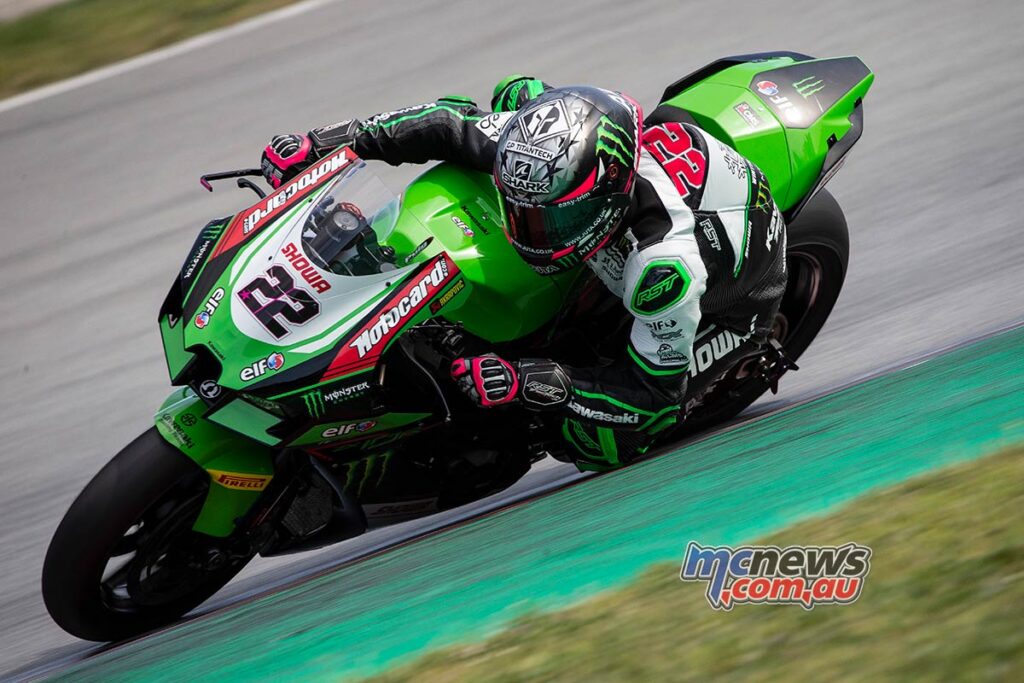
As well as making set-up improvements on the new Ninja Lowes confirmed that the after-effects of a recent shoulder injury have been put behind him, feeling much closer to 100 per cent than he did after the previous tests.
Alex Lowes
“Unfortunately, on day two it was raining so we have English weather in Spain! At one stage it looked like both days would have rain but luckily yesterday I did 73 laps and my shoulder felt much better than during the most recent Montmelo tests. This is really positive. From the bike side of things we worked on some corner exit electronics and chassis settings, trying to improve my feeling in this area. It is the same work that we did in Jerez and Montmelo, and we continued that same testing plan in Aragon; it was really positive. I think this is the best I have felt since my first ride on the Ninja ZX-10RR. We have three or four things just to tick off the list before the first race but I am really happy. We did a good job here with the guys so now I am looking forward to chilling out and coming back fresh for the next test.”
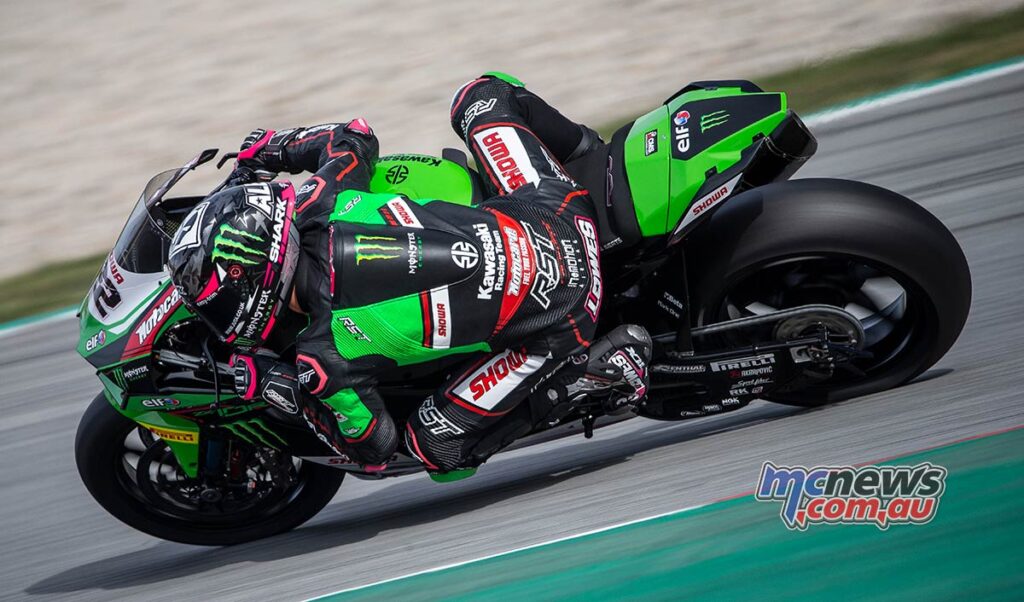
Marcel Duinker – Crew Chief for Alex Lowes
“We understood yesterday that the final day would be possibly wet so we did 73 laps and managed to test all the items we had. Of course the opening race weekend is coming closer now so most of the day was spend in preparations for a race weekend. We are very confident because the speed was there, the consistency was there. The bike is performing well, the rider is happy so in the next test it will be a case of fine tuning our preparations for the first round.”
Rea only rode in the afternoon of day one but still completed all his testing tasks, including one fast time attack lap at the end, on what is a new model Ninja in road and WorldSBK specification for the 2021 season.
Kawasaki’s latest Ninja ZX-10RR features engine, chassis and aerodynamic changes from the previous model, including a higher rev ceiling and internal front winglets that generate significant extra downforce at high speed.
Jonathan Rea
“The test has been really positive. Even if the track was a little bit ‘green,’ because we had a lot of water on the surface and we had to wait until lunchtime to ride, we were able to confirm a lot of items we tested at Montmelo. The track is different but it also has some similarities, so that means the outcome is positive. These items were mostly chassis related, so it means we could really start to put the package together. I could feel my rhythm was getting better lap-by-lap. We rode a lot on our race set-up, understanding all our potential and starting to really get ready for race weekend in a few weeks. We saw that day two would be wet so we decided to do one time attack at the end of the first day and we were able to be quite fast. We will now move on to more testing before the race. I feel really good with the bike and the team; everybody has been working really hard and I now am excited to get back home and then finish off my preparations.”
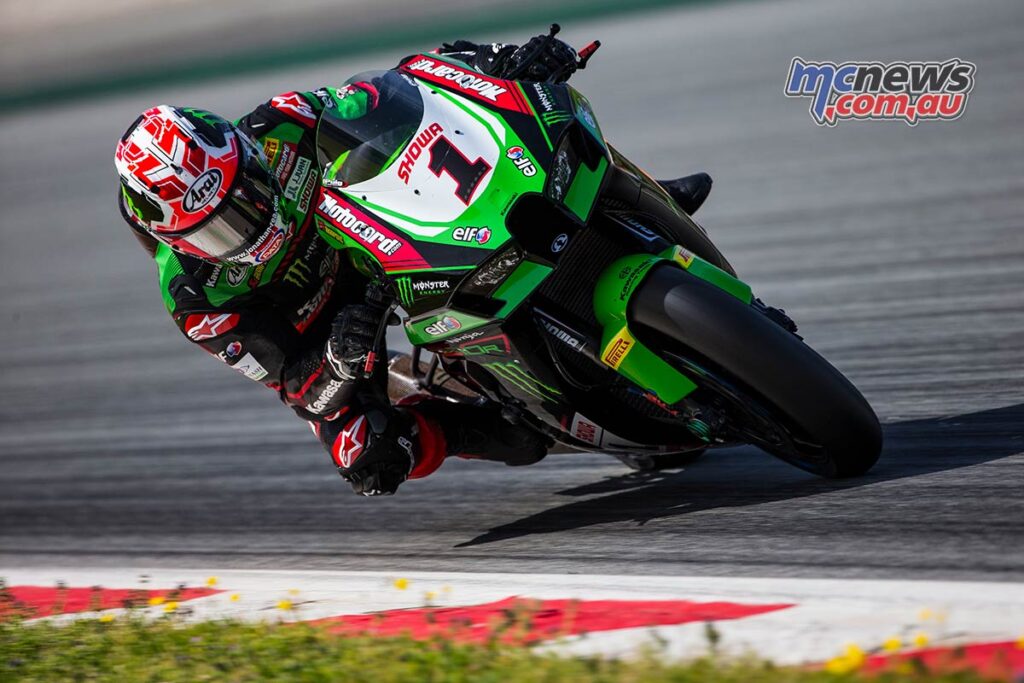
Pere Riba – Crew Chief for Jonathan Rea
“On the first morning of this test the track was still a little damp so we decided to only ride in the afternoon and use half a day of testing time, from 1 until 6. There were cars on the track before us and the grip was a little bit strange but we followed the plan and confirmed some things that we had already testing in Portimao and Montmelo. Step-by-step we have been arriving at the starting point for the first race of the season here at Motorland. We did not just focus on a lap times but finally Johnny was happy with the bike and he made a good lap time. His physical condition was good. Of course some more time on track would be good because this year we have not been so lucky with the weather. Everywhere we have been there has been rain on some days, but this is something we cannot control. We will keep working and the next test will be here at Aragon again. I hope we are more lucky with the weather but overall we made all we wanted to at this test and we will keep on building our base and speed from Jonathan.”
Both Kawasaki and Yamaha will undertake one final pre-season test, again at Motorland Aragon, between 4-5 May. The first round at Motorland, from 21-23 May, will be followed one week later by round two at Estoril in Portugal, making it a busy start to a season that has already been delayed by ongoing restrictions related to the global Covid pandemic.
| Date | Track | SBK | SS600 | SS300 |
| 21-23 May | Aragón | X | X | X |
| 28-30 May | Estoril | X | X | |
| 11-13 Jun | Misano | X | X | X |
| 2-4 Jul | Donington Park | X | ||
| 23-25 Jul | Assen | X | X | X |
| 20-22 Aug | Navarra | X | ||
| 3-5 Sep | Magny-Cours | X | X | X |
| 17-19 Sep | Catalunya | X | X | X |
| 24-26 Sep | Jerez | X | X | X |
| 1-3 Oct | Algarve | X | X | X |
| 15-17 Oct | San Juan Villicum | X | X | |
| 12-14 Nov | Mandalika | X | X | |
| TBA**** | Phillip Island | X | X |
Source: MCNews.com.au
If you’re in the market for an electric bicycle in 2021, GasGas has a full range of options to choose from. The brand introduces 11 models to its ebike line this year with enduro, trail, cross-country, and dual-cross mounts meeting the needs of just about any cyclist.
Each bike in the line comes equipped with the latest Yamaha PW-X2 (find out more in the Yamaha YDX-MORO Mountain Bike Preview article), PW-ST, or PW-CE motor and a high-range battery. We’ll take a look at the specifics of the enduro-cross and trail-cross options below. We’ll cover the cross-country and dual-cross in a separate piece.
Enduro
Enduro Cross 11.0
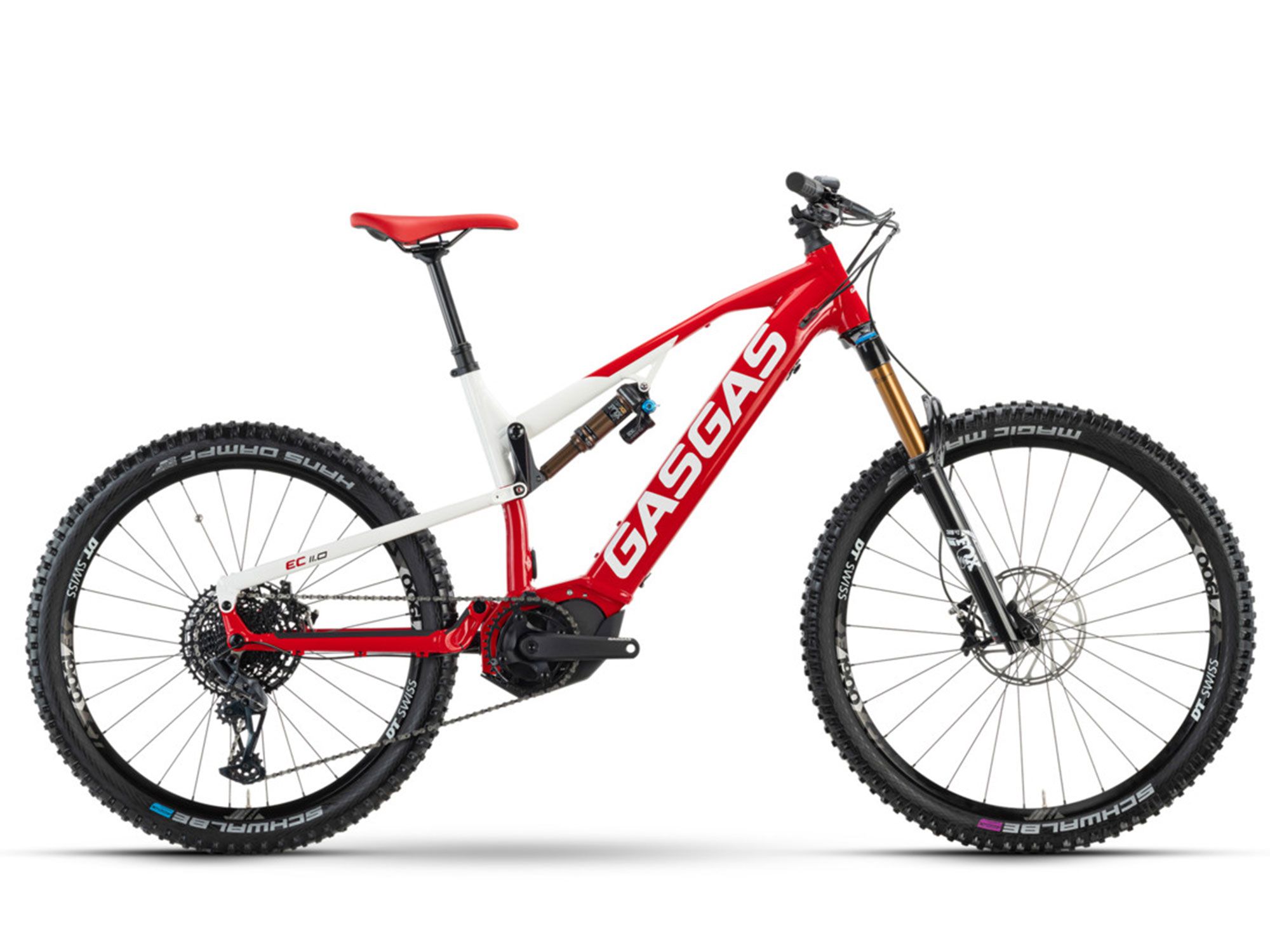
The Enduro Cross 11.0 is the top-tier entry in this rugged category. It’s powered by Yamaha’s PW-X2 250W motor, which features a Quad Sensor System that detects lean angle, gradient steepness, speed, cadence, and pedal force to provide the optimal amount of support. It comes with five adjustable power settings, Extra Power, High, Standard, Eco, and +Eco, providing a maximum output of 59 pound-feet of torque. The motor is powered by a 630Wh Simplo TPS battery equipped with a fast charger. It features an aluminum frame and Fox 38 Float Factory fork and DPX2 shock. The 11.0 is also equipped with a SRAM GX Eagle 12-speed drivetrain, SRAM G2 brakes, and Schwalbe tires. All three Enduro Cross entries have a 29-inch front and 27.5-inch rear wheel configuration.
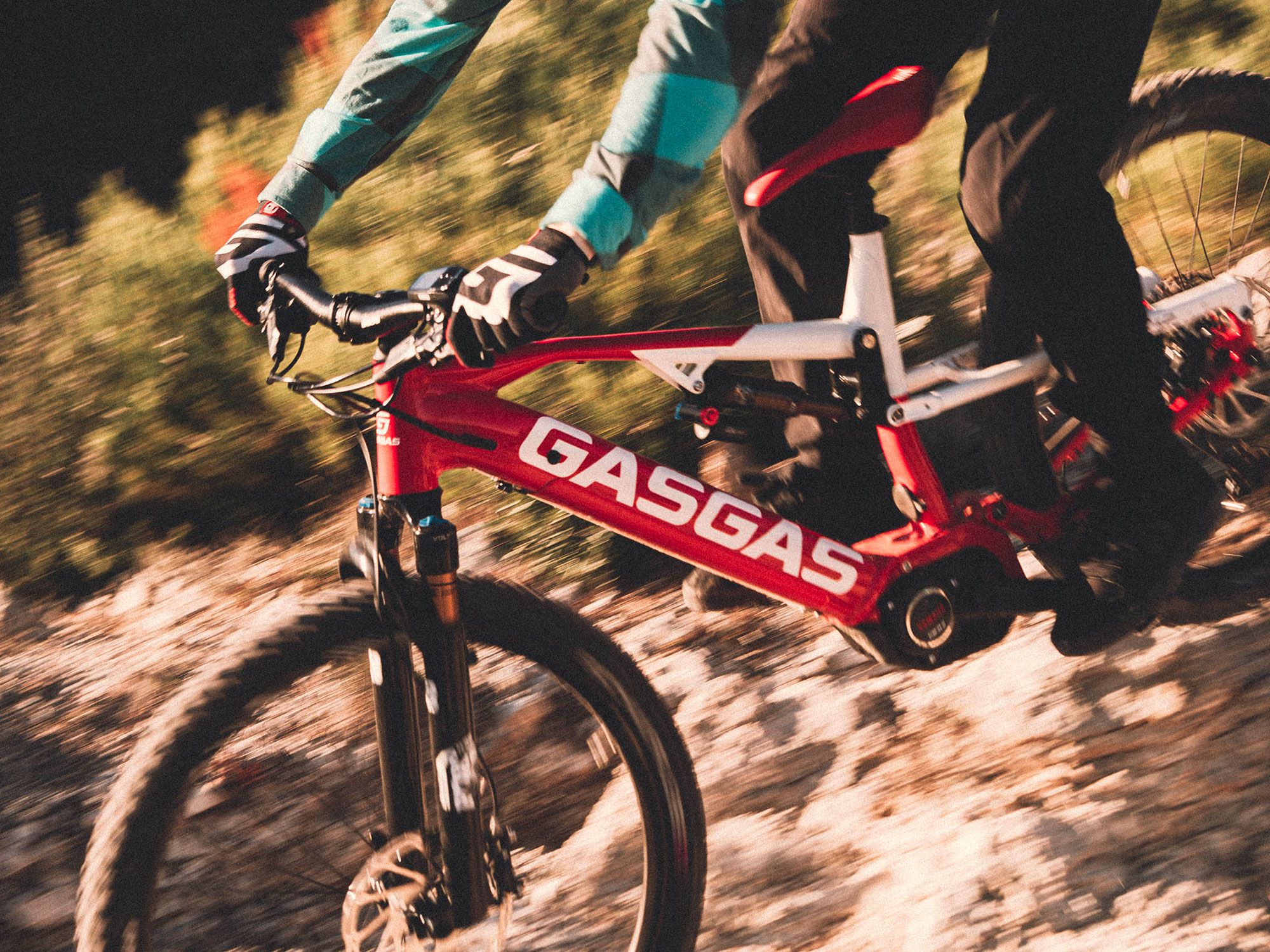
Enduro Cross 9.0
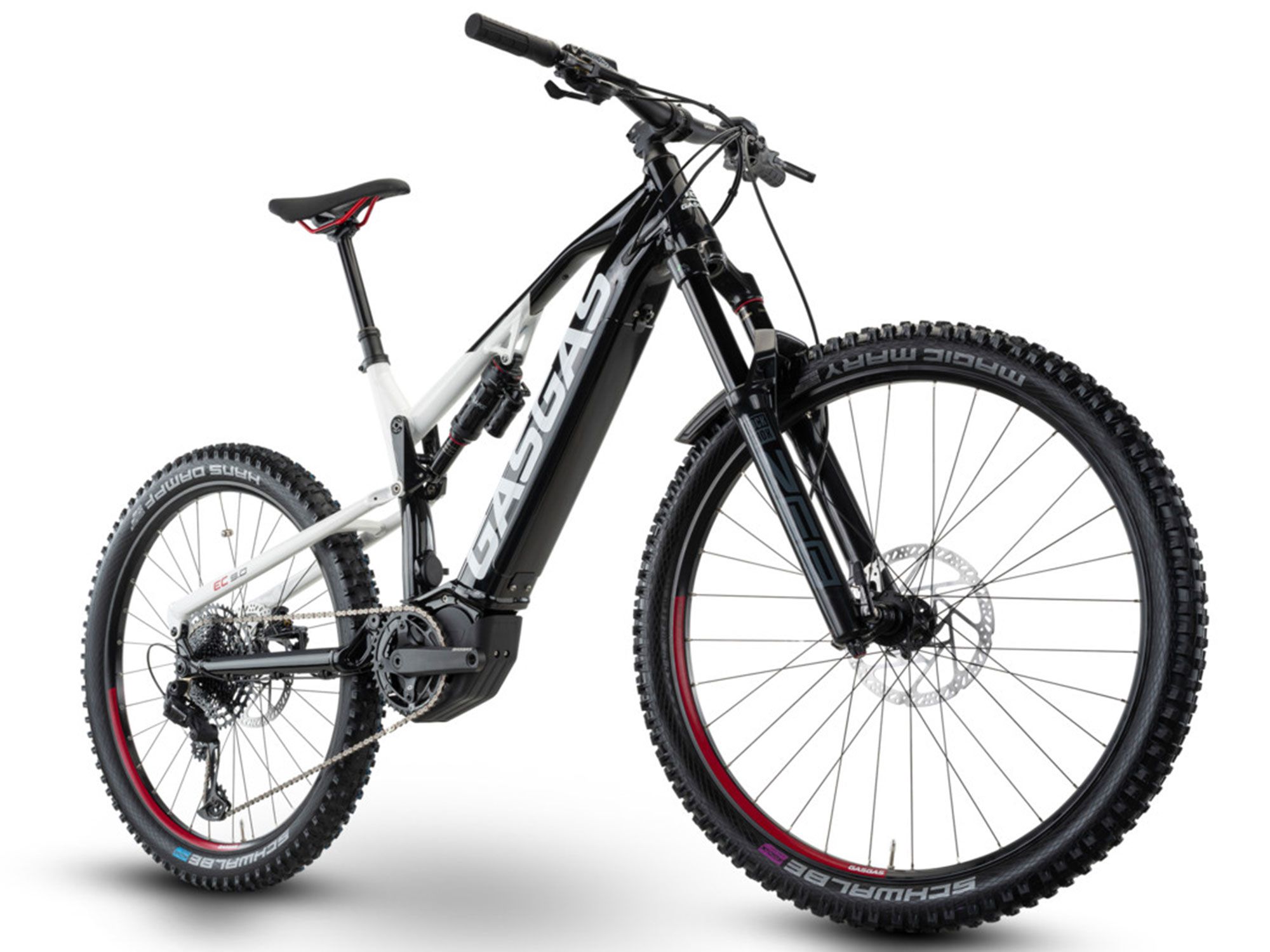
The Enduro Cross 9.0 packs the same motor/battery components as the 11.0, integrated into the same aluminum frame. The 9.0 is suspended by a RockShox Zeb fork and Super Deluxe shock. Drivetrain spec comes down a level from the 11.0 with the 9.0′s SRAM SX Eagle 12-speed group. Tektro Orion four-piston hydraulic disc brakes and 2.6-inch-wide Schwalbe tires round out the 9.0.
Enduro Cross 8.0
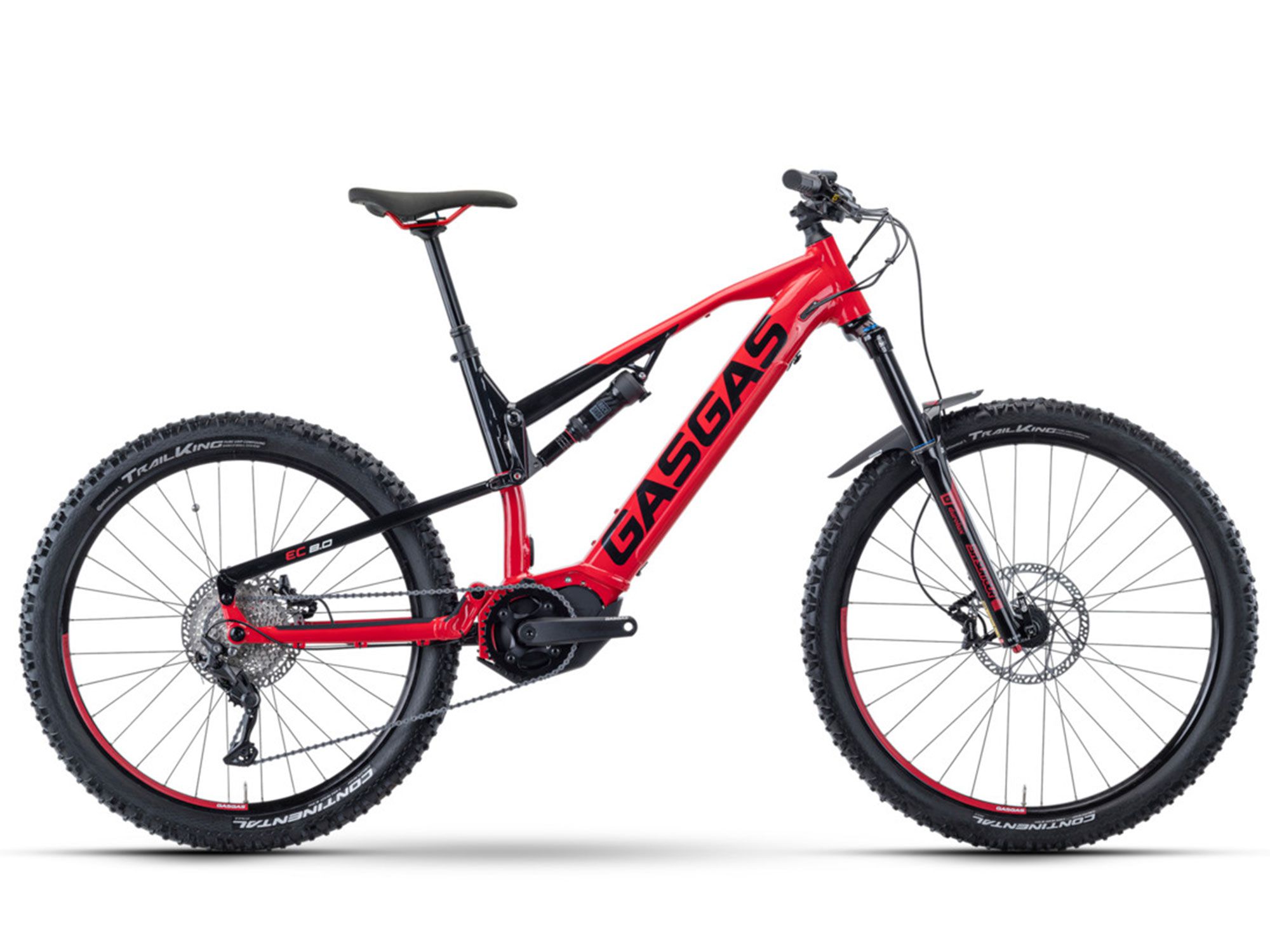
The Enduro Cross 8.0 utilizes the motor/battery combination utilized on the 9.0 and 11.0, along with a high-strength aluminum frame. This one’s packing a Shimano Deore 10-speed drivetrain, Tektro Orion brakes, and Continental Trail King tires. The package is suspended by an SR Suntour Durolux 36 fork and RockShox Deluxe Select R shock.
Trail Cross
Trail Cross 9.0
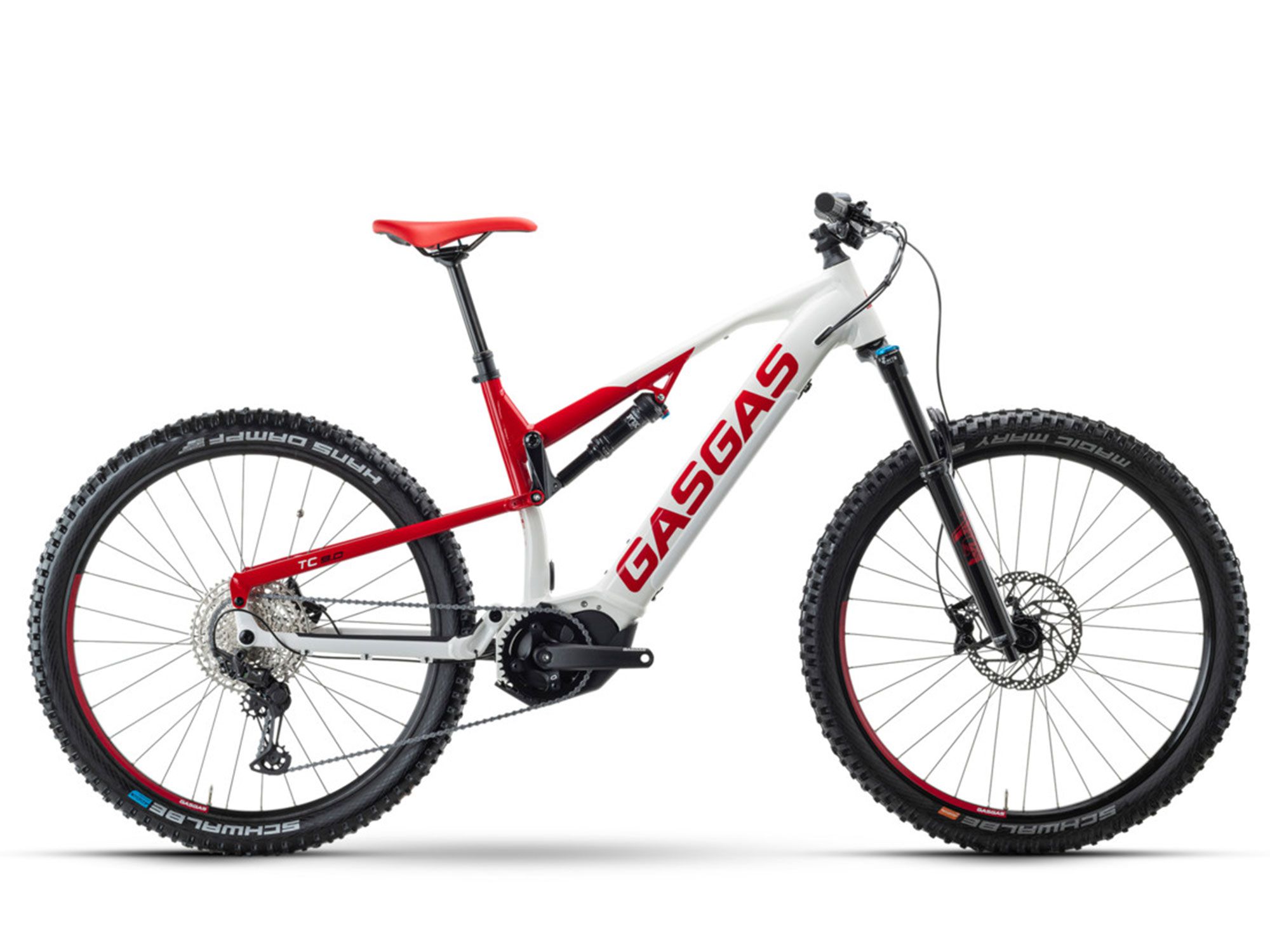
With the Trail Cross line, GasGas provides three do-it-all mountain bikes. At the top of the heap is the 9.0, which is equipped with the same Yamaha PW-X2 250W motor used in the Enduro Cross mounts. That means riders will also enjoy the benefits of the Quad Sensor System. It’s powered by the 630Wh Simplo TPS battery with fast charger integrated into the aluminum alloy frame. It comes with Fox Float 36 Rhythm fork and Fox Float DPS Performance Series shock, has a Shimano BR-MT420 braking package, and Shimano Deore 12-speed drivetrain. The 29-inch front and rear wheels are shod in Schwalbe rubber.
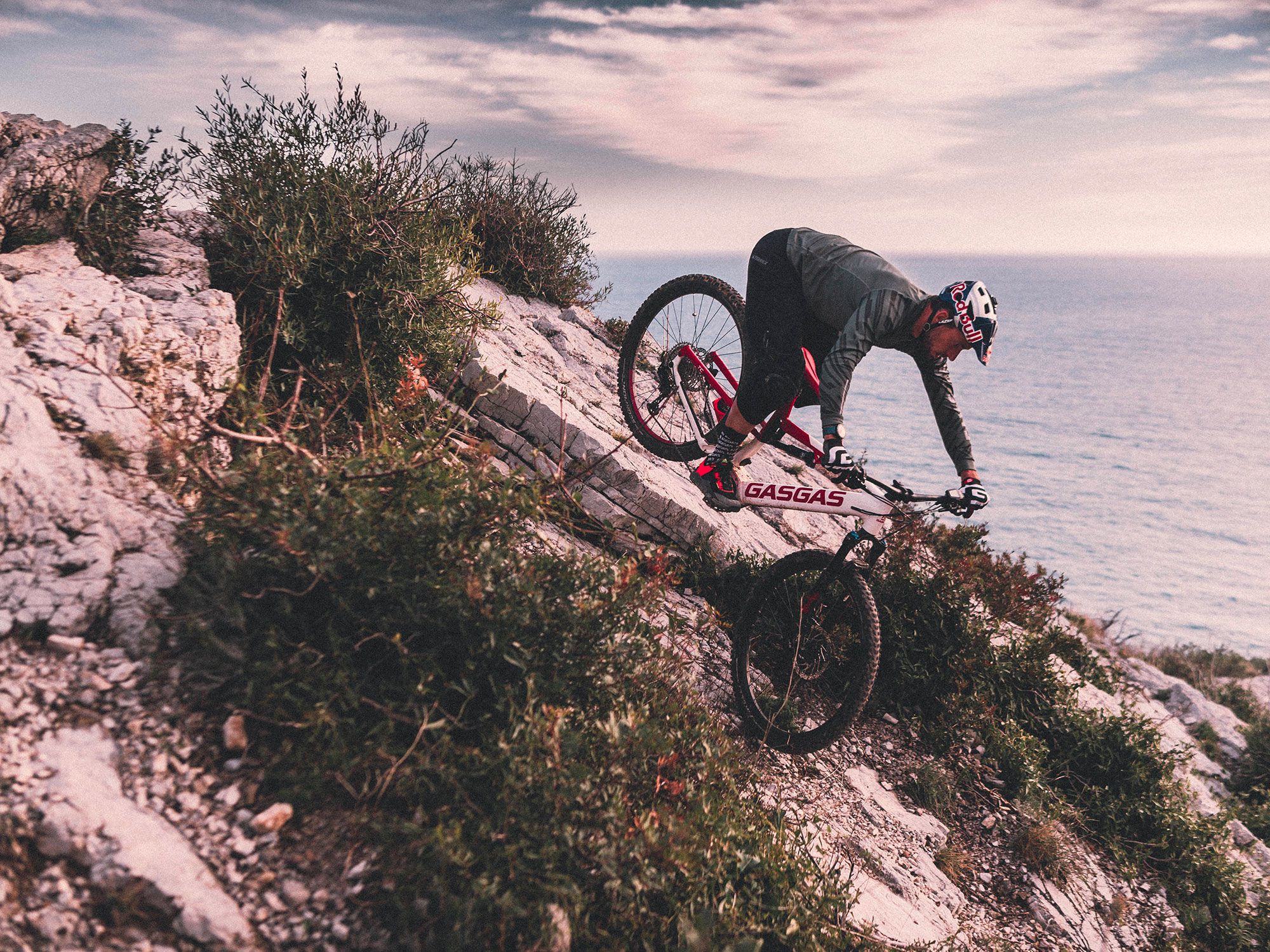
Trail Cross 7.0
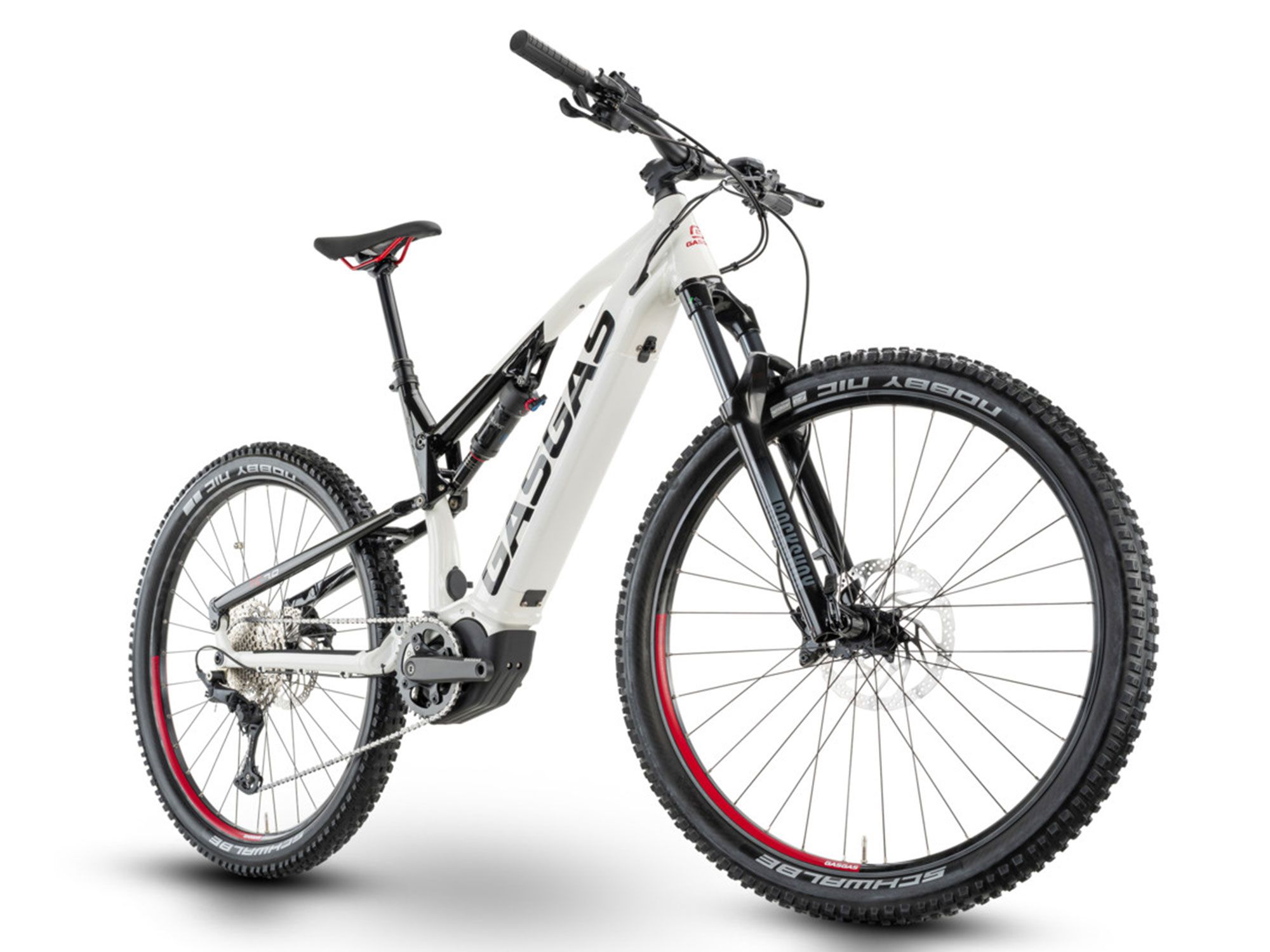
The 7.0 is powered by the 250W Yamaha PW-ST motor, which has a peak output of 52 pound-feet of torque. It has four power modes rather than five but also features the Quad Sensor System. It also comes with an Automatic Support mode that automatically adjusts support based on the detected riding conditions. There’s also a Smoother Hill Starts function that restricts power to the rear wheel in order to optimize traction during tricky uphill starts. The Yamaha ML500 battery with fast charger is integrated into the aluminum alloy frame, and the package features RockShox Recon Silver RL fork and RockShox Deluxe Select+ RL shock. It’s got a Shimano BR-MT420 braking setup and Shimano Deore 11-speed drivetrain. The 29-inch front and rear wheels roll on Schwalbe Nobby Nic tires.
Trail Cross 5.0
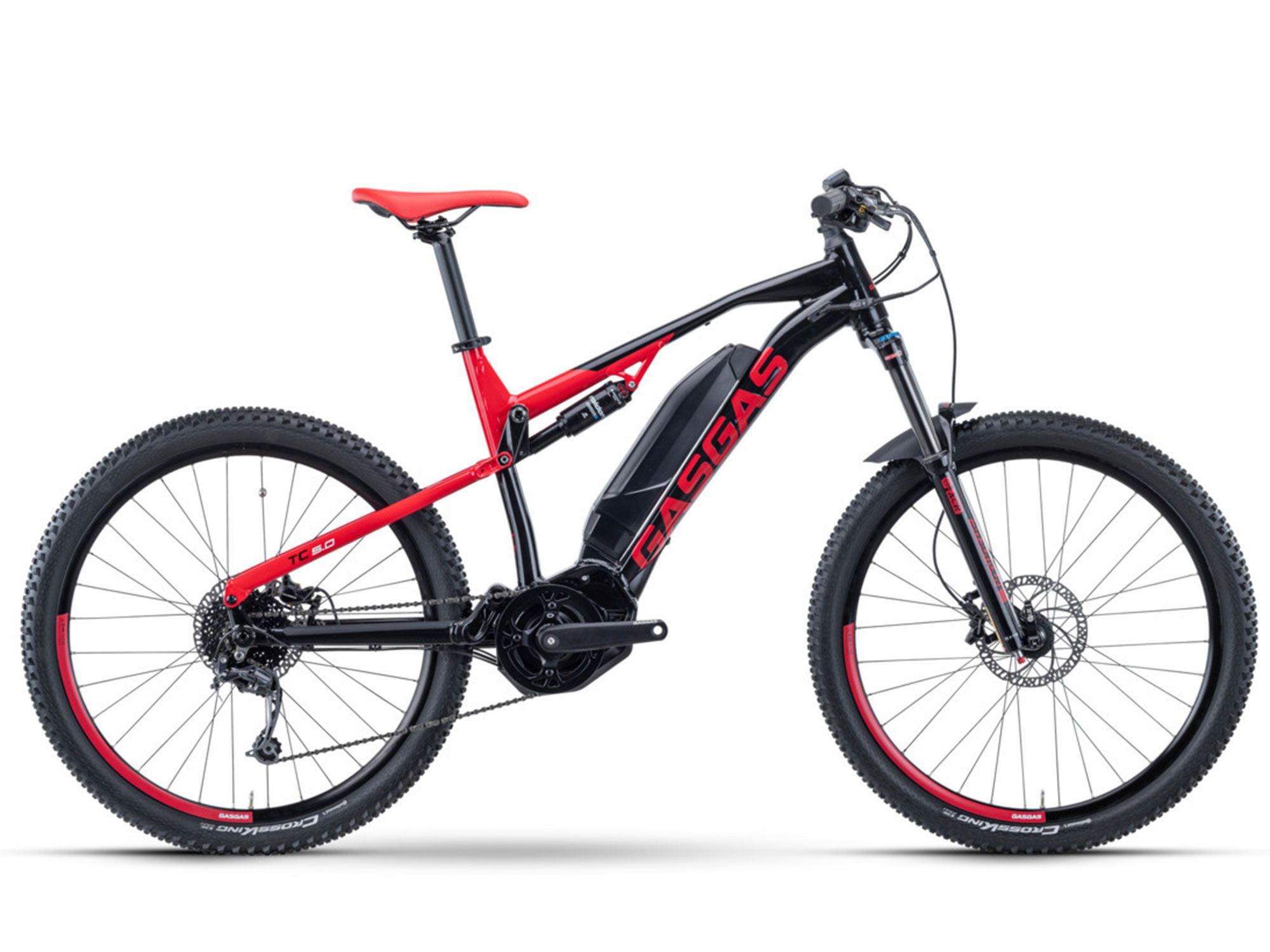
The 5.0 is powered by the same motor as the 7.0 and features a Yamaha DT500 externally mounted 500Wh battery. An SR Suntour XCR34 LOR DS fork and SR Suntour Raidon R shock soak up the bumps and Tektro HD-M735 braking equipment provides stopping power at the front and rear. The bike features a Shimano Altus/Deore nine-speed drivetrain, and the 27.5-inch front and rear wheels come wrapped in Continental Cross King rubber.
Source: MotorCyclistOnline.com